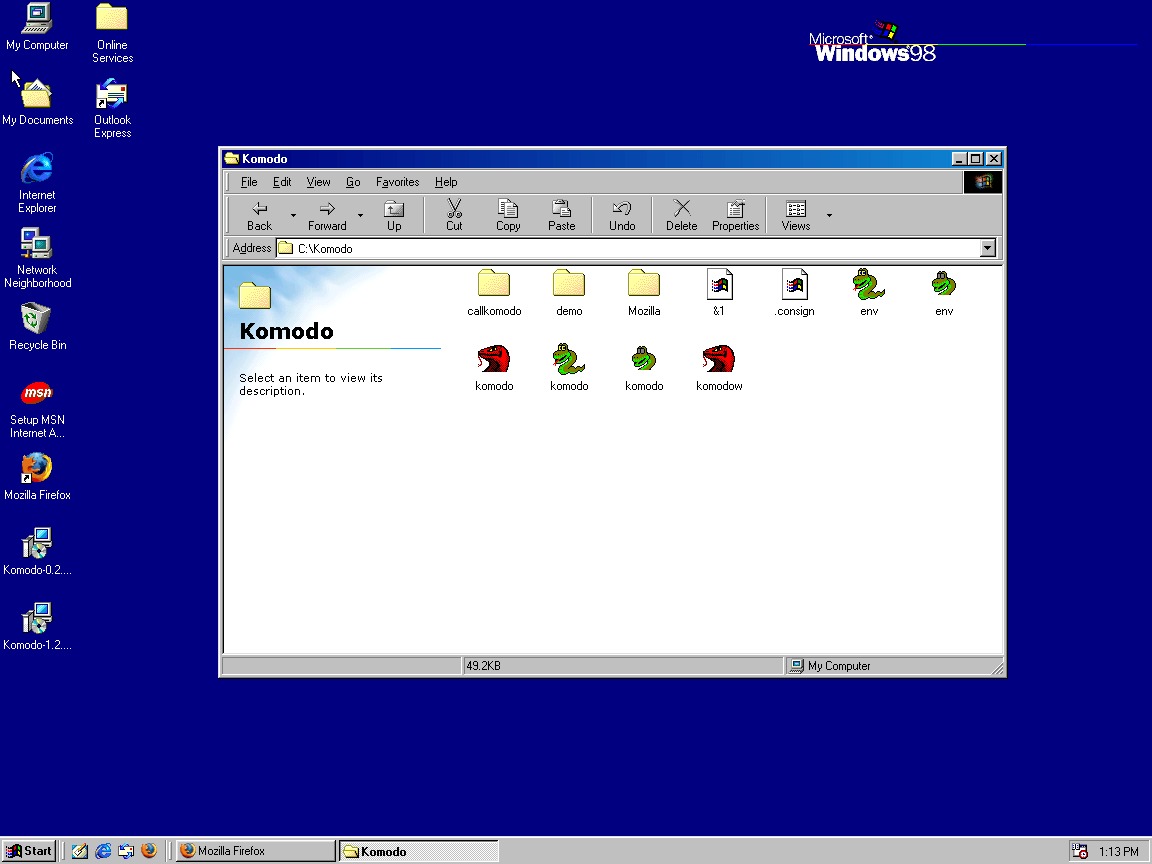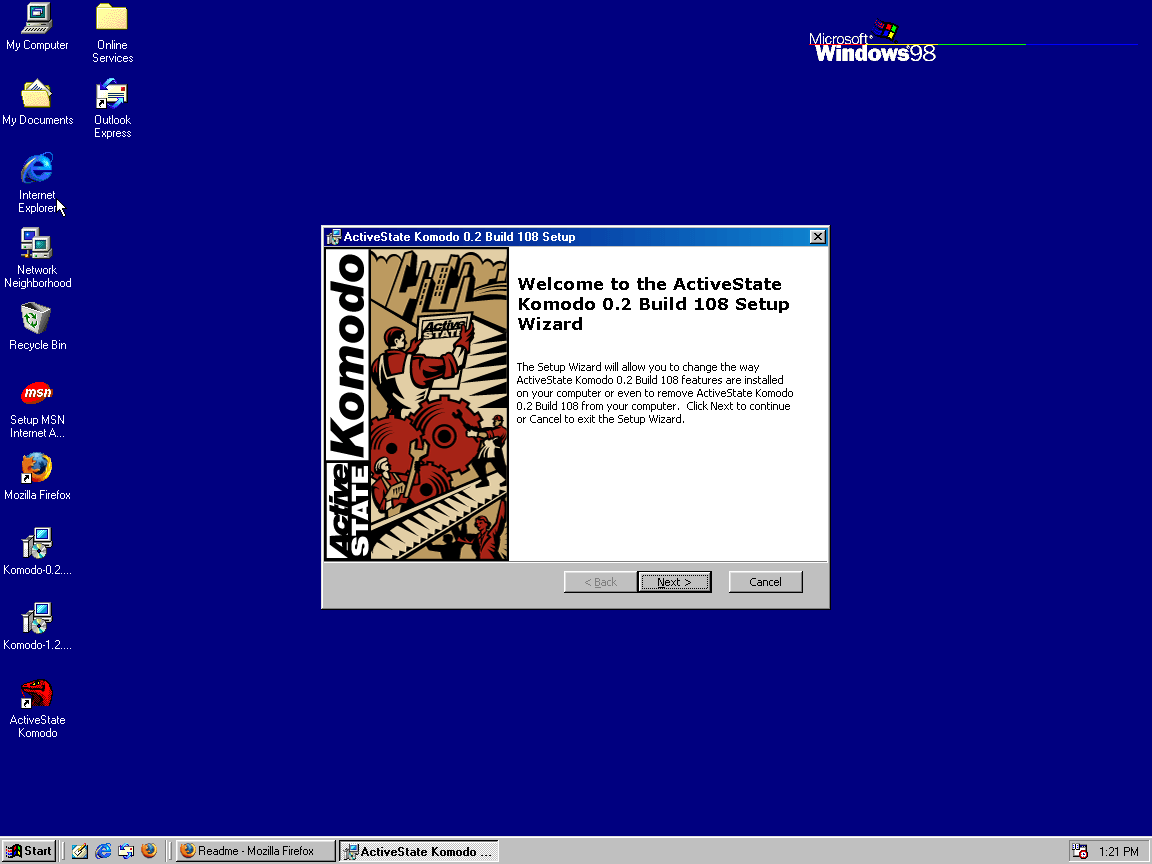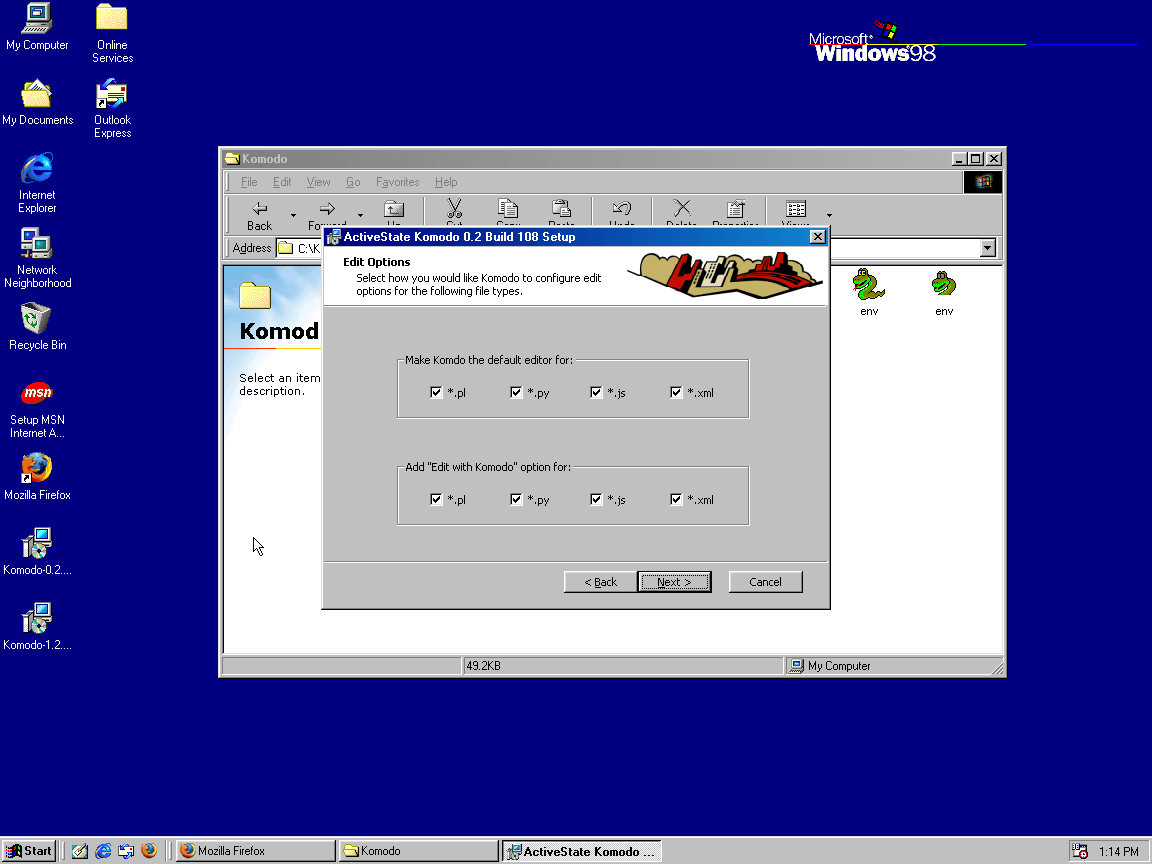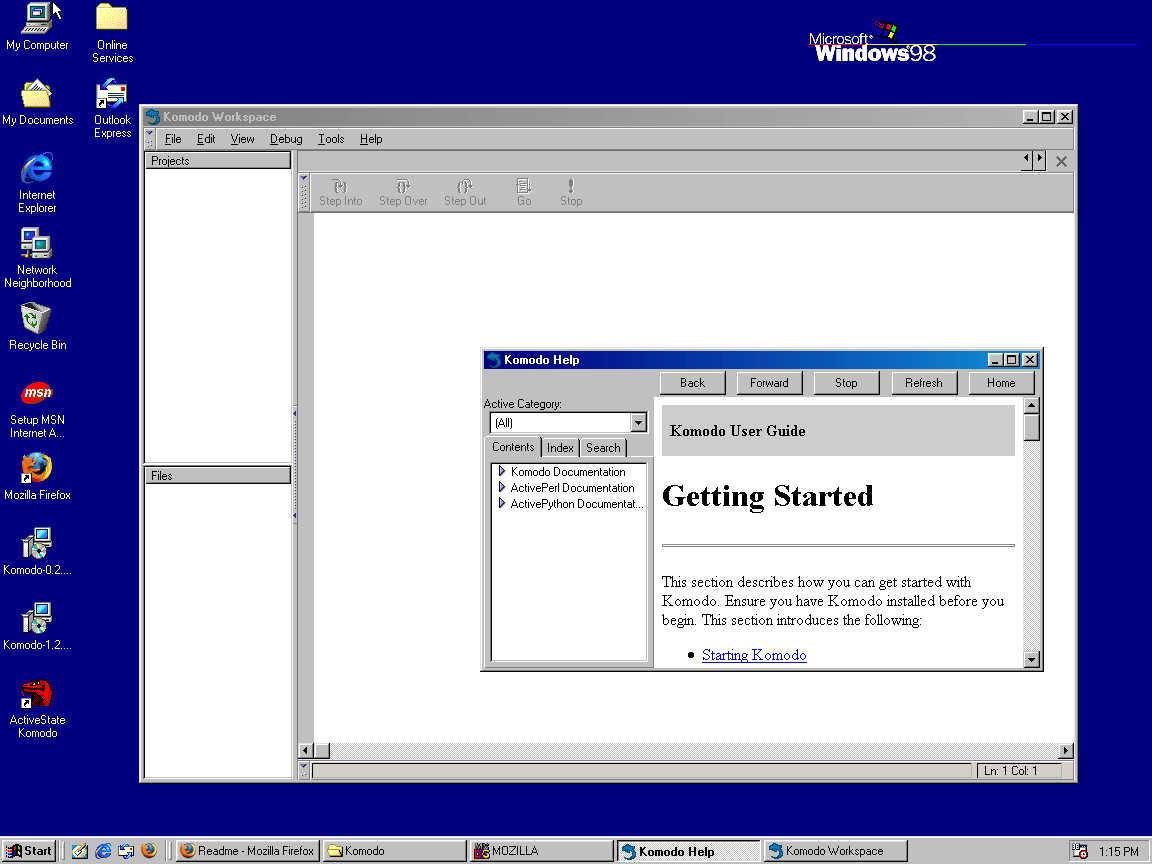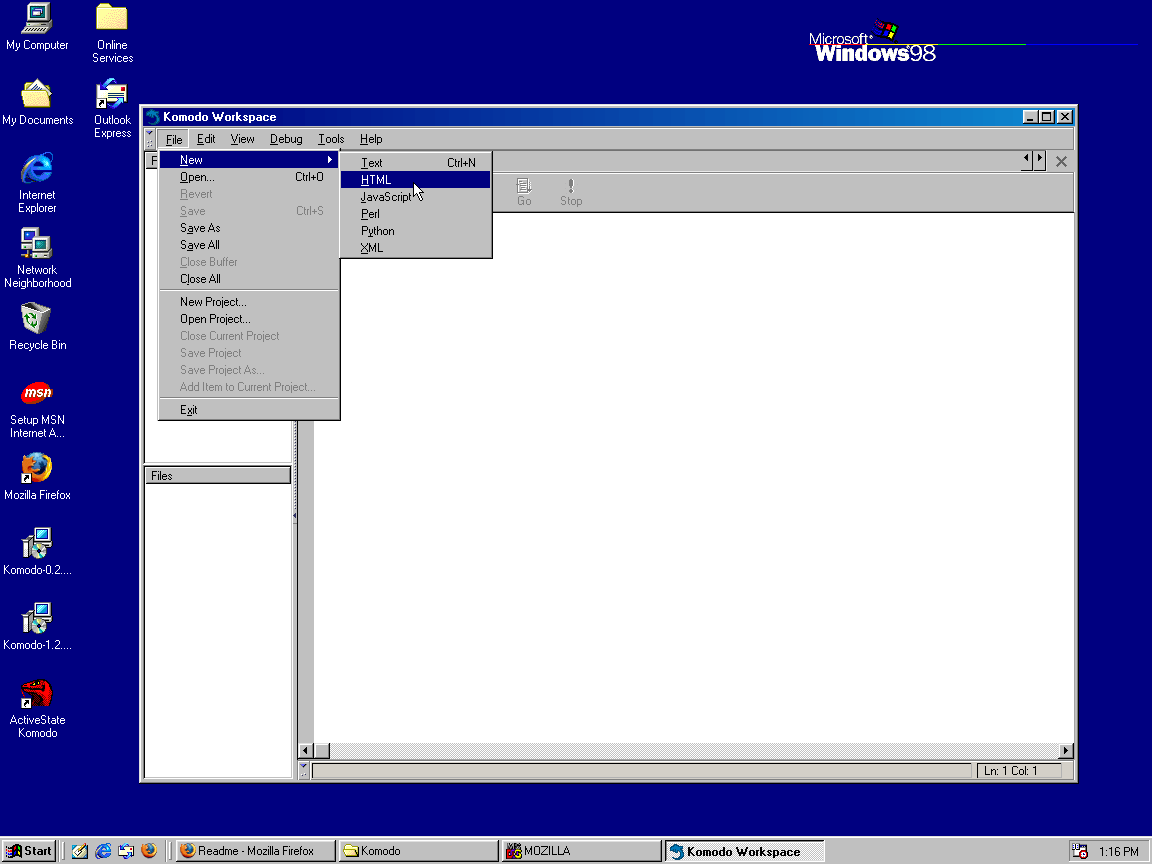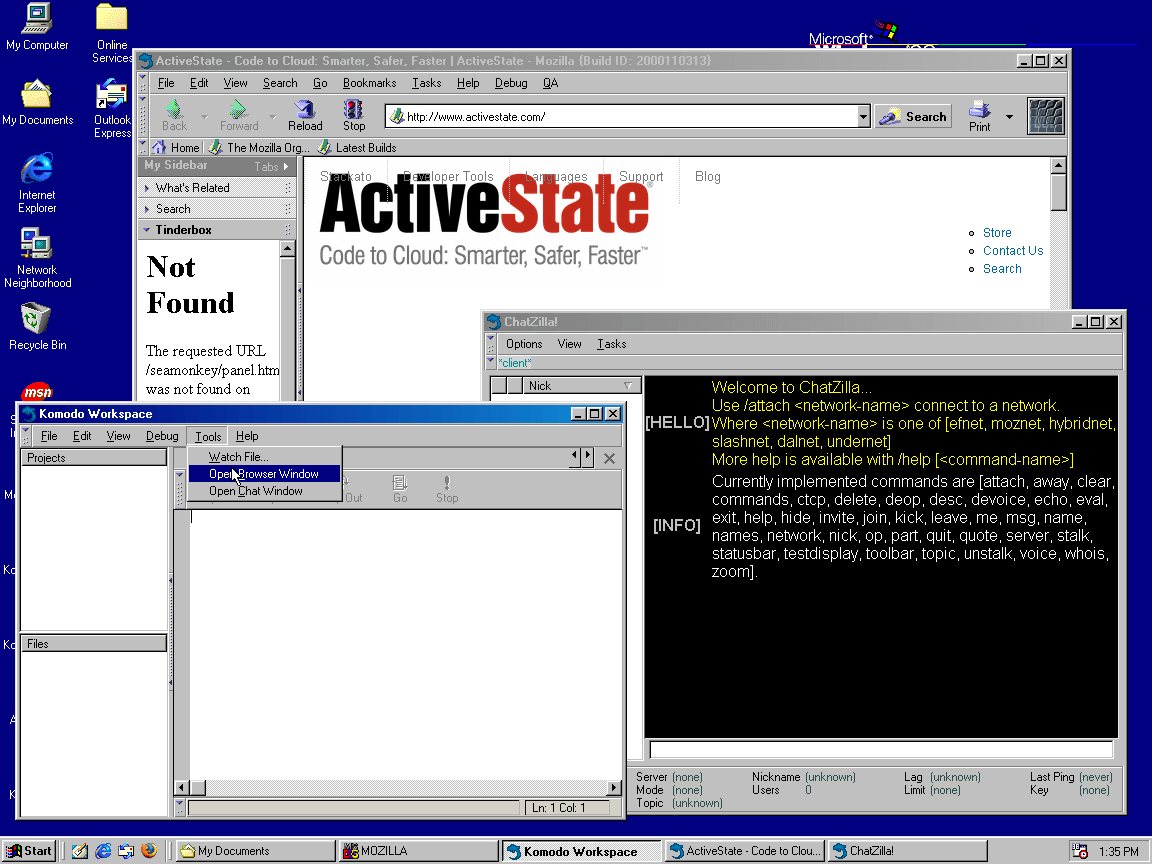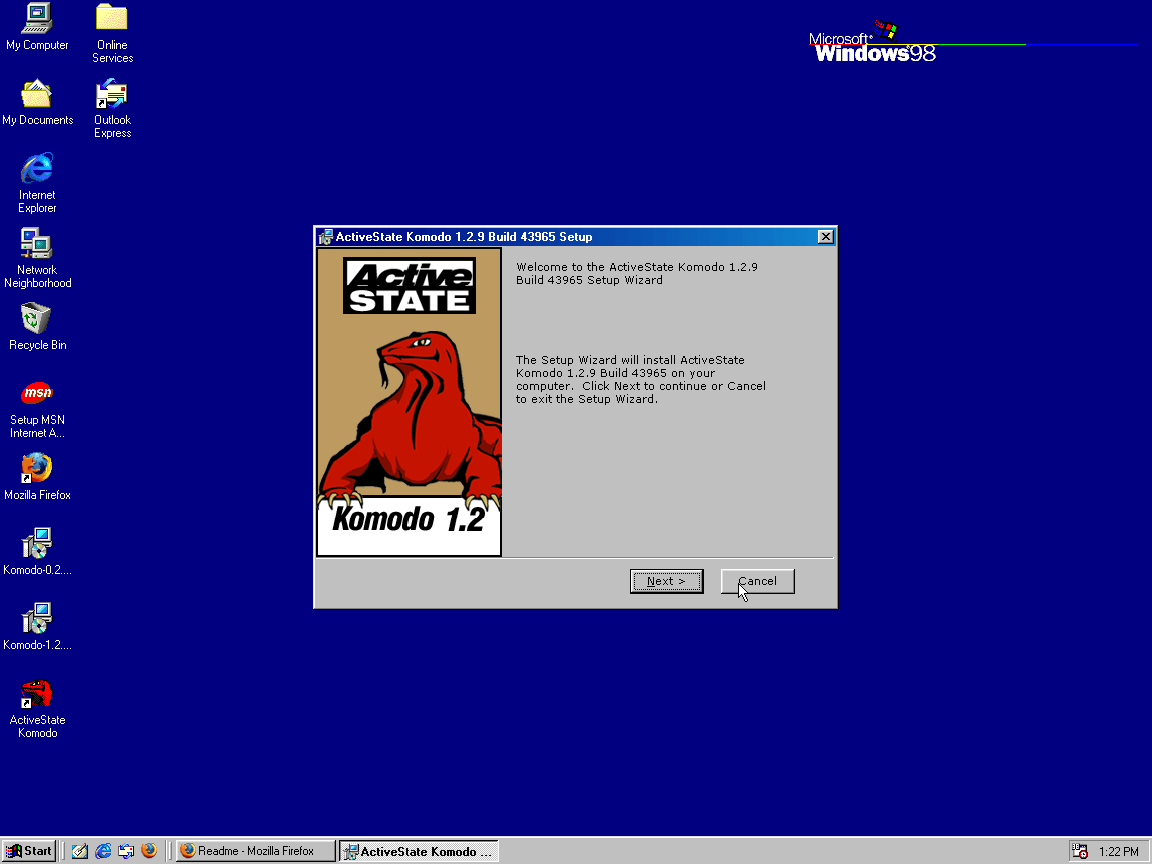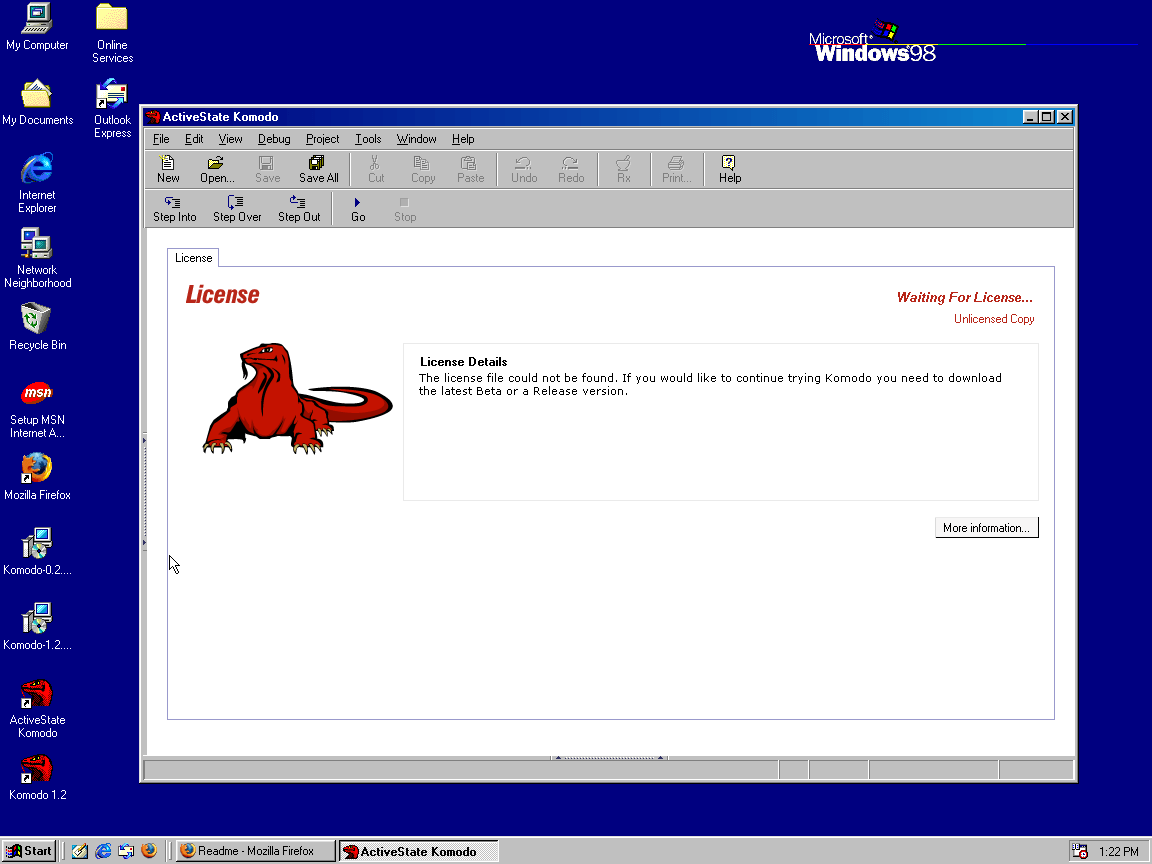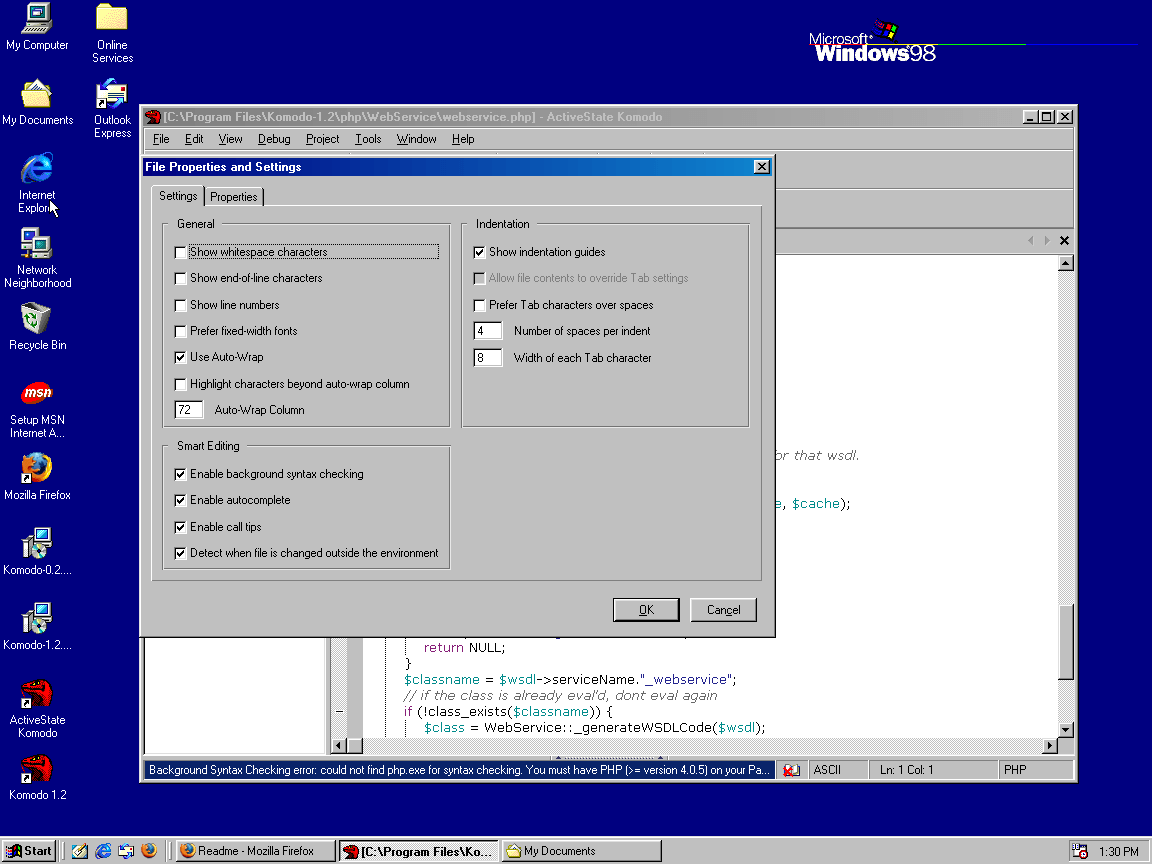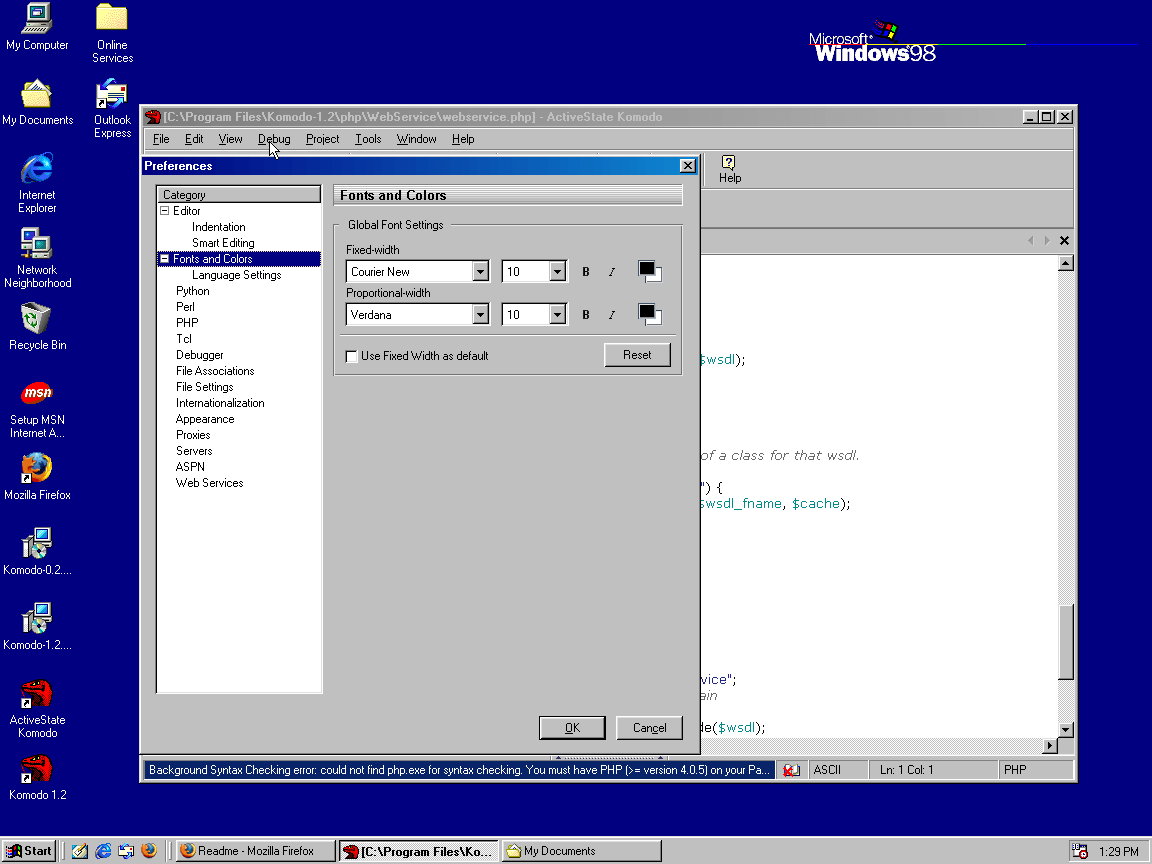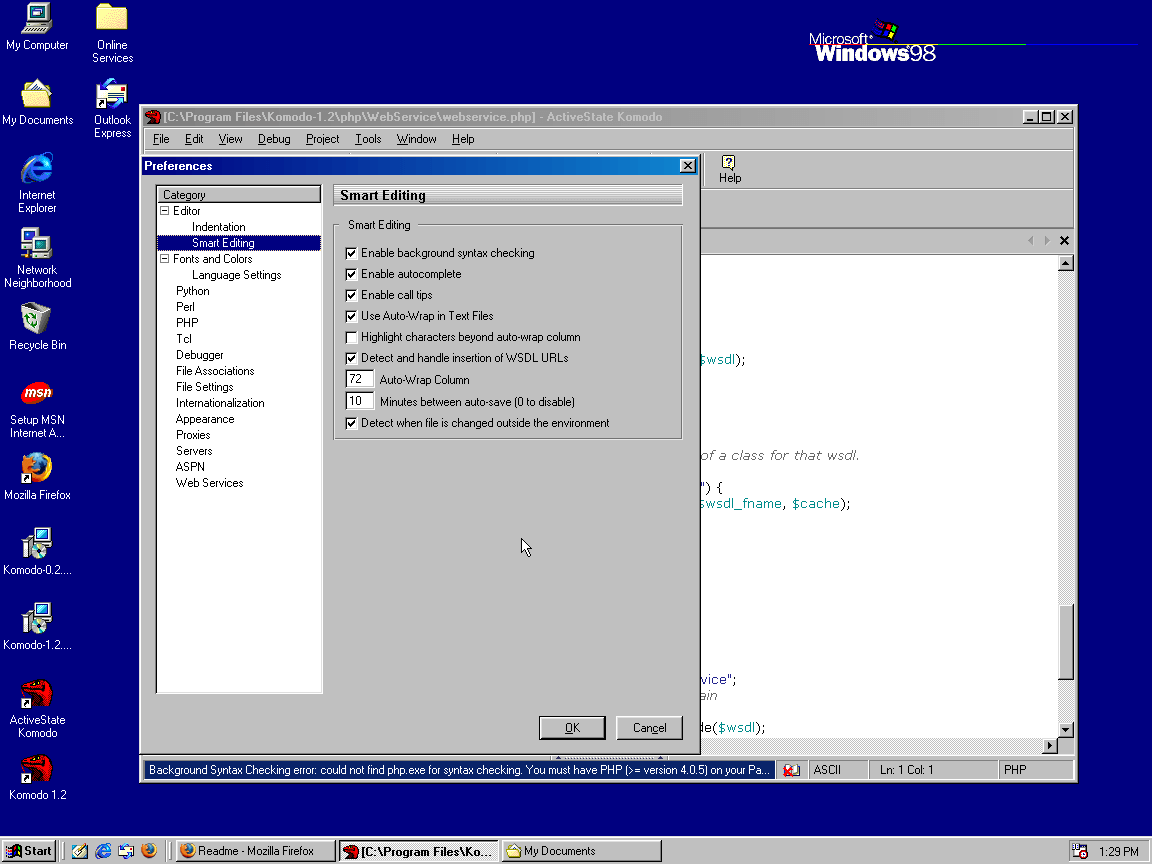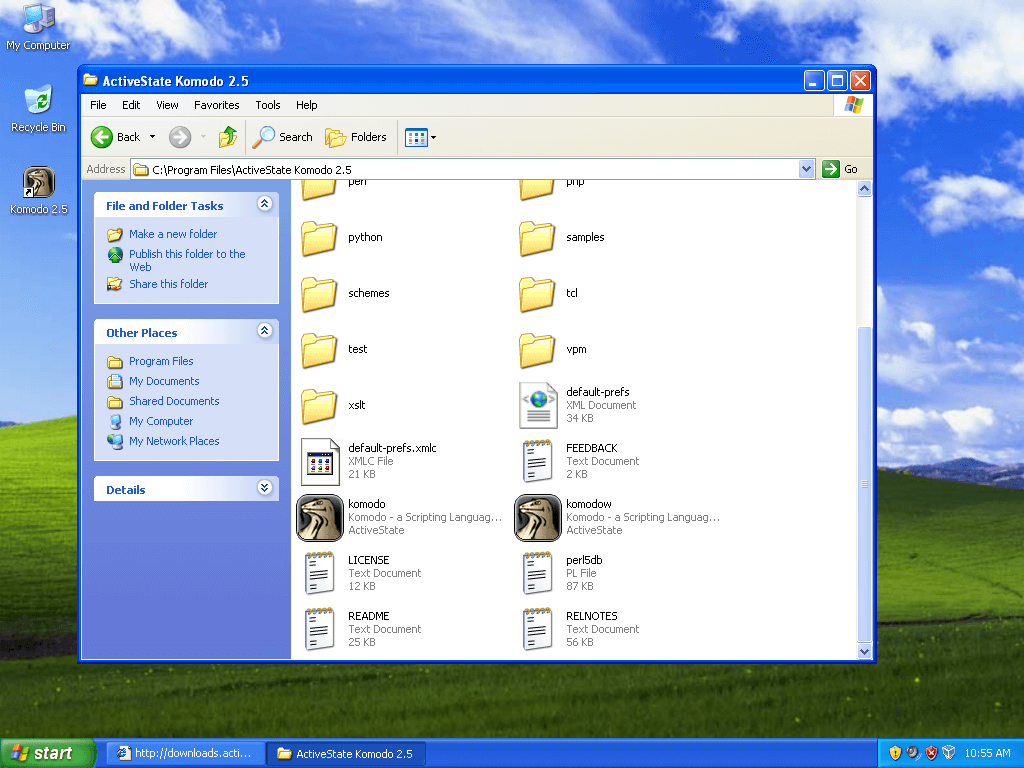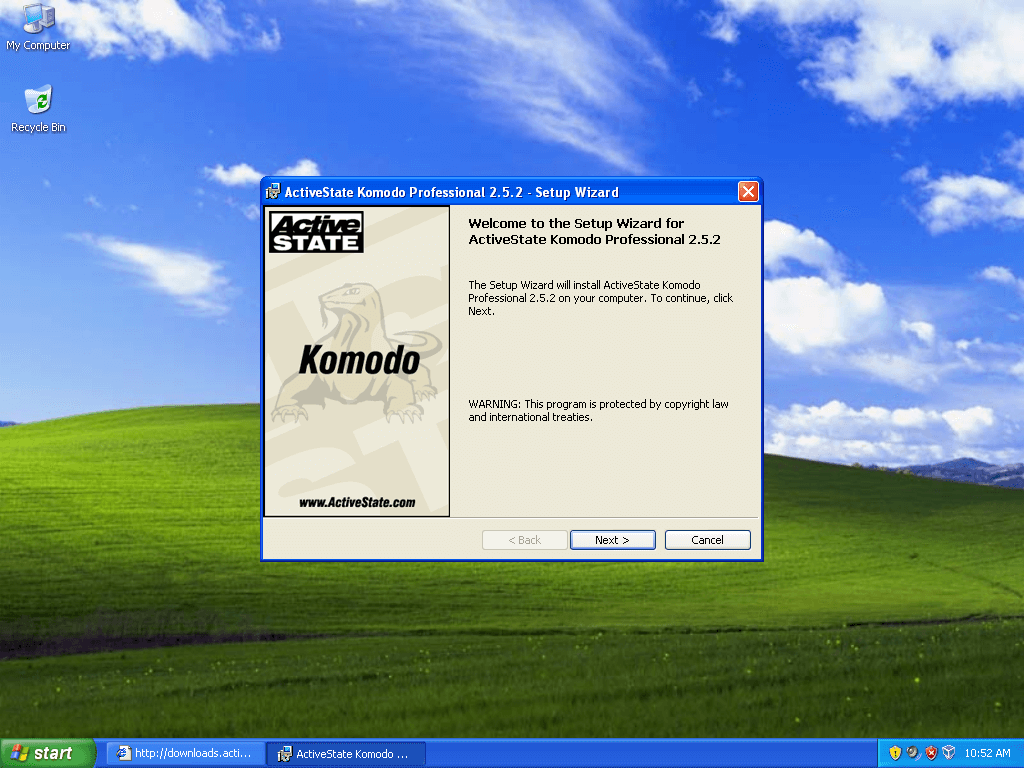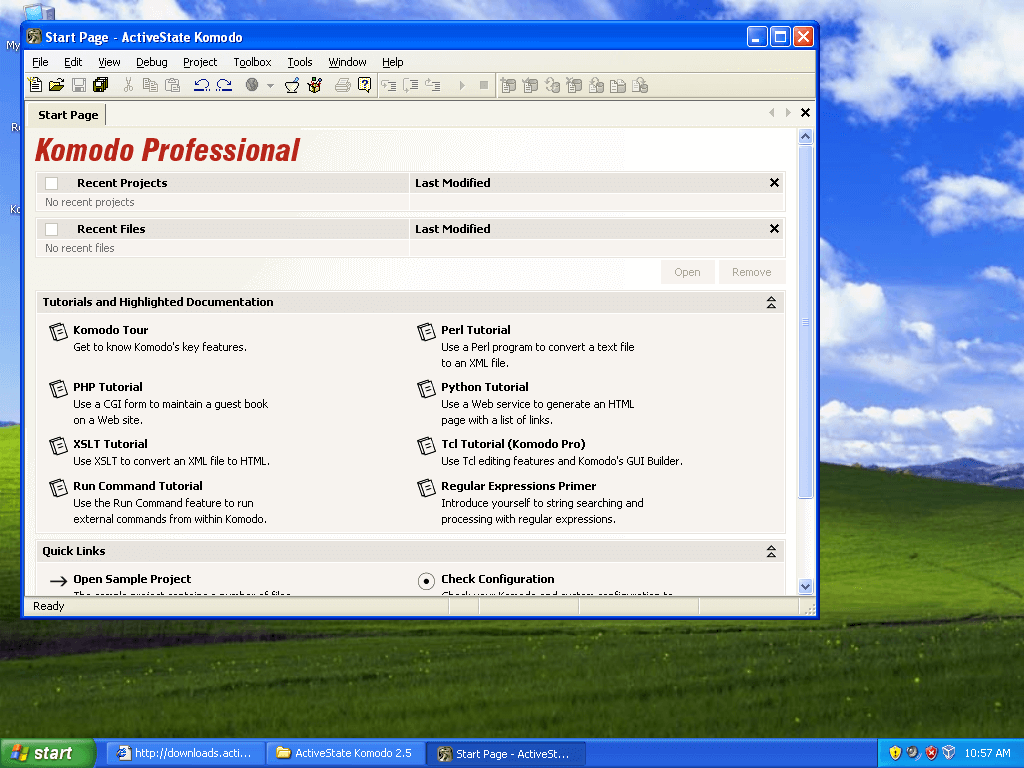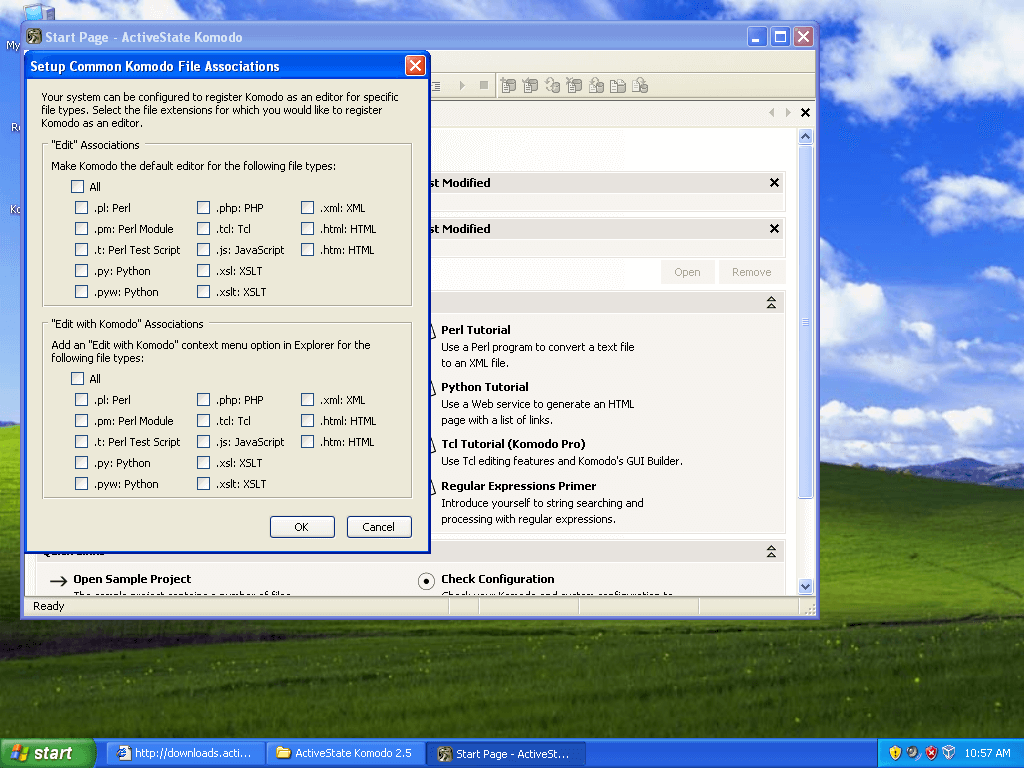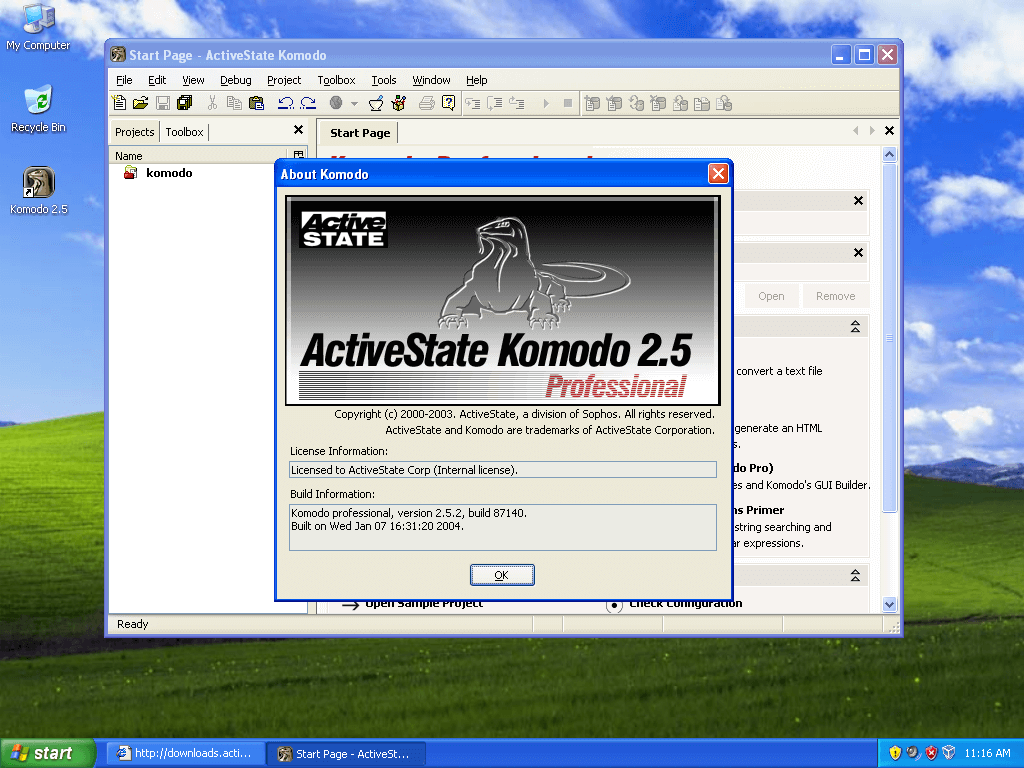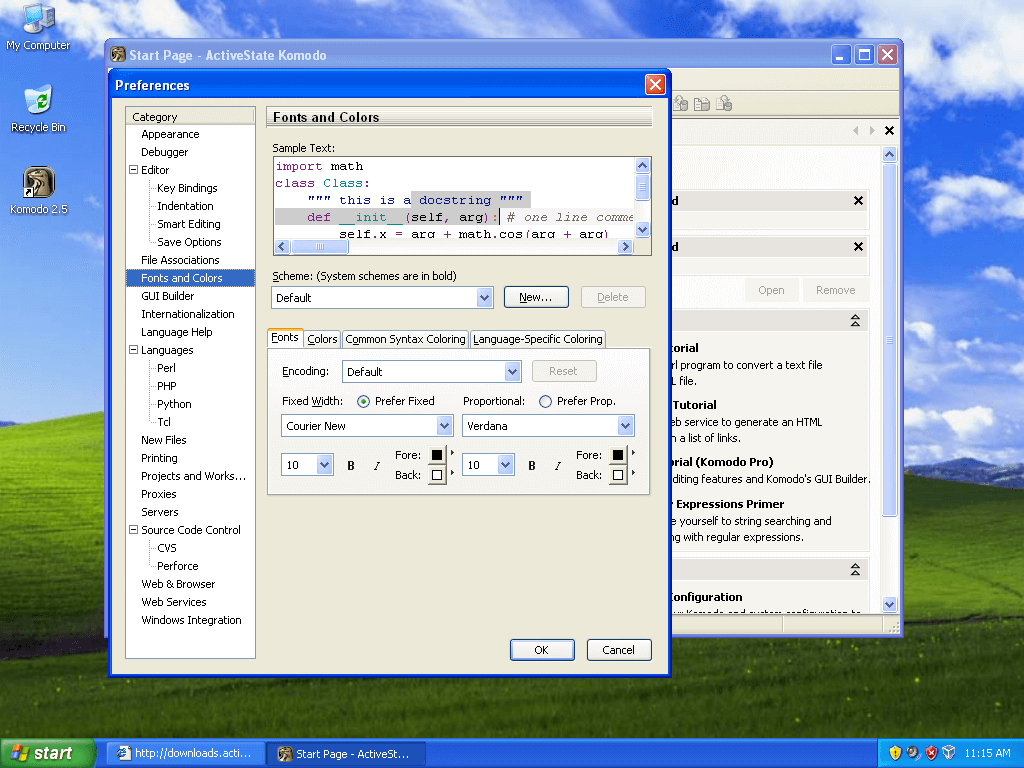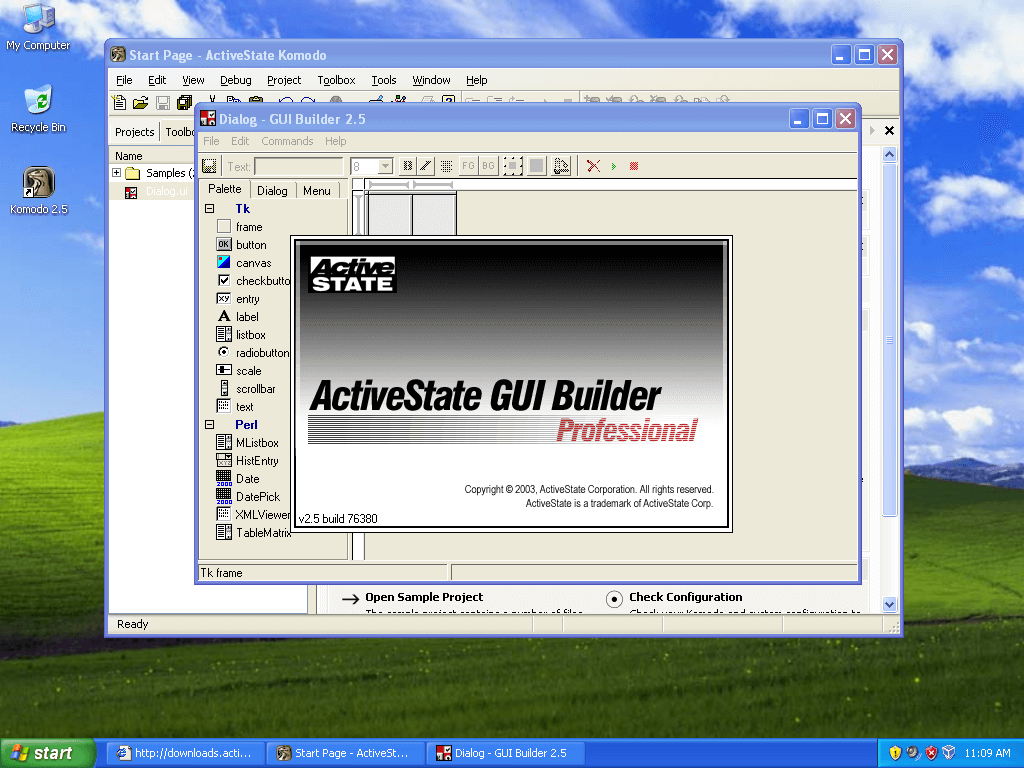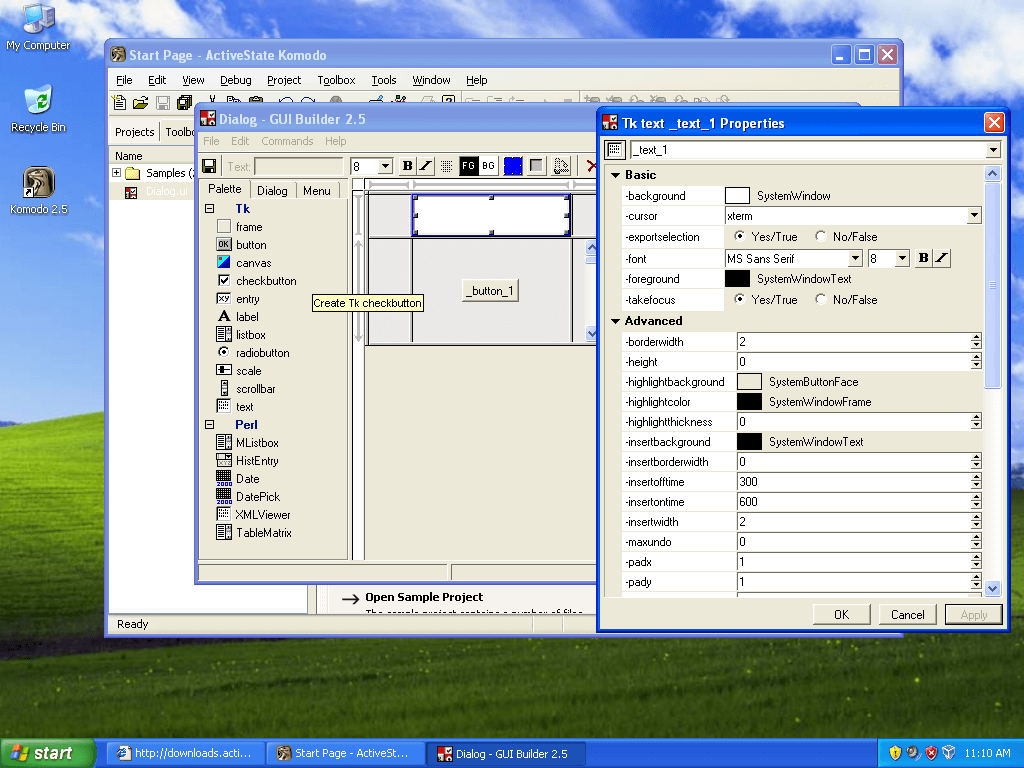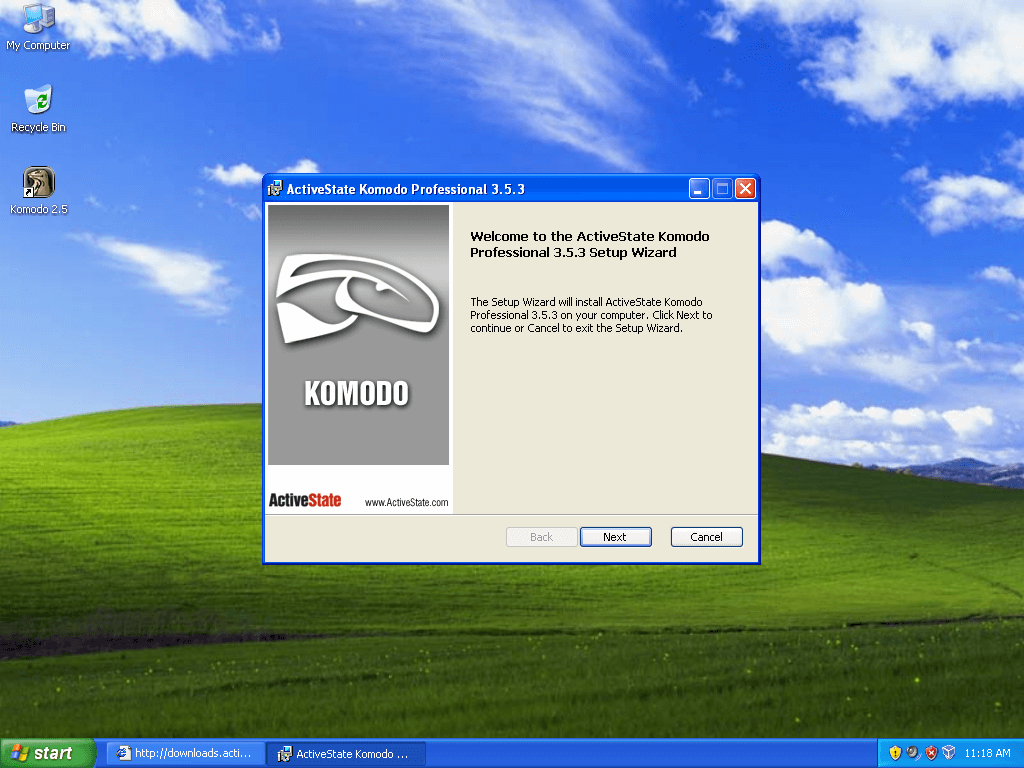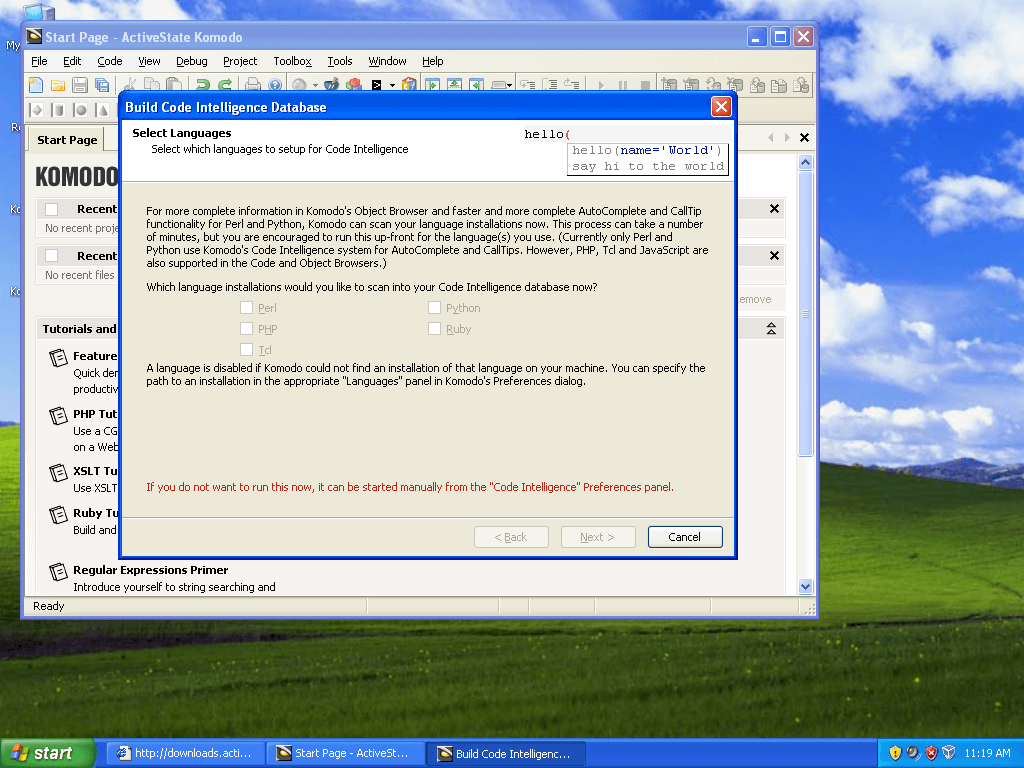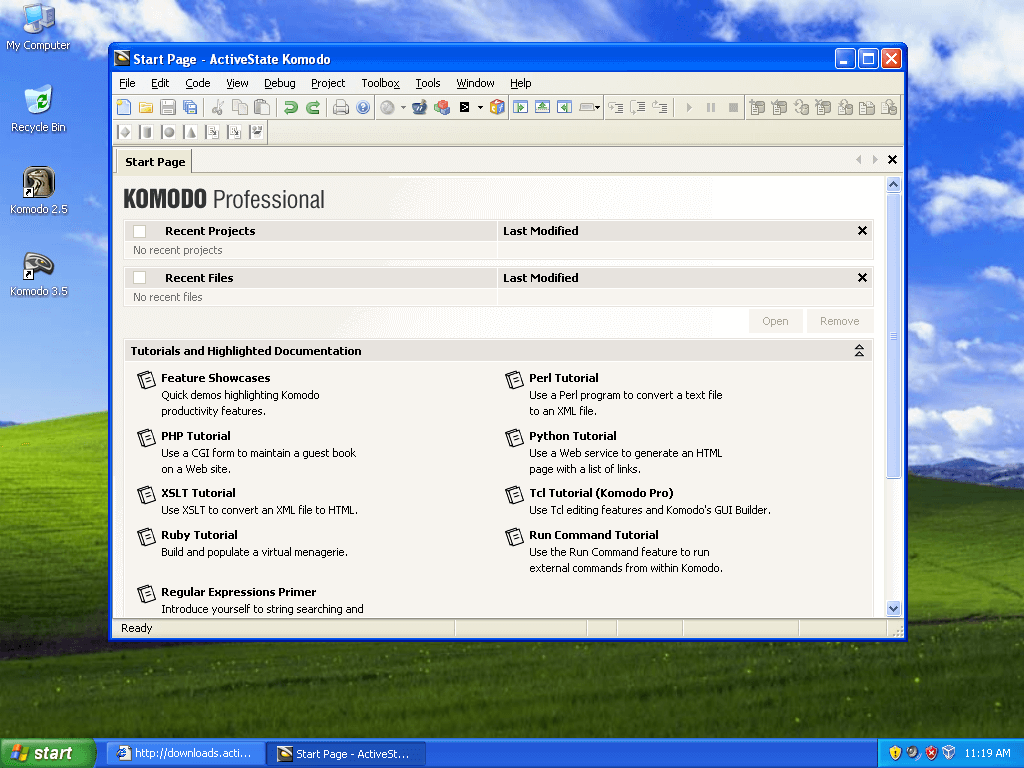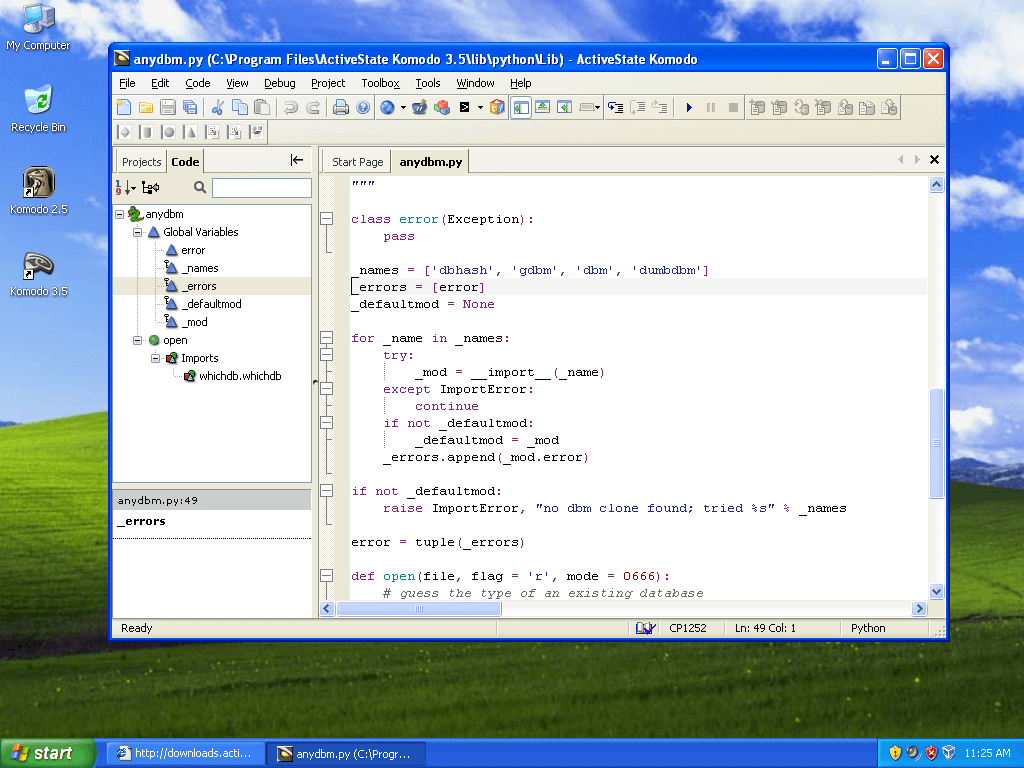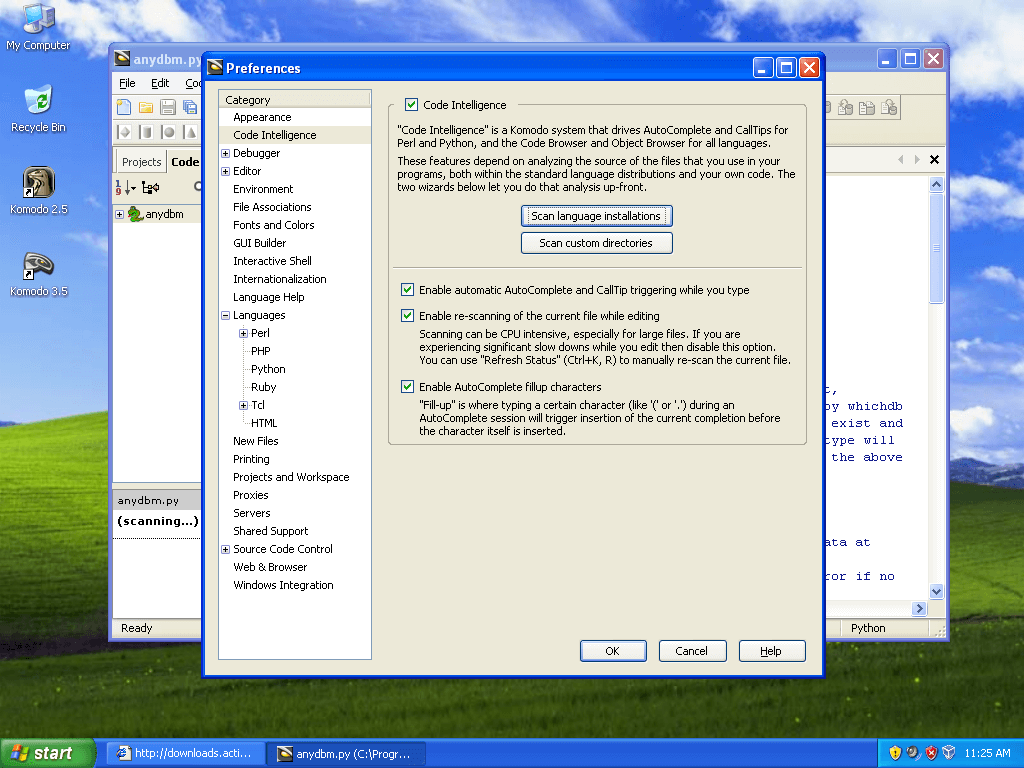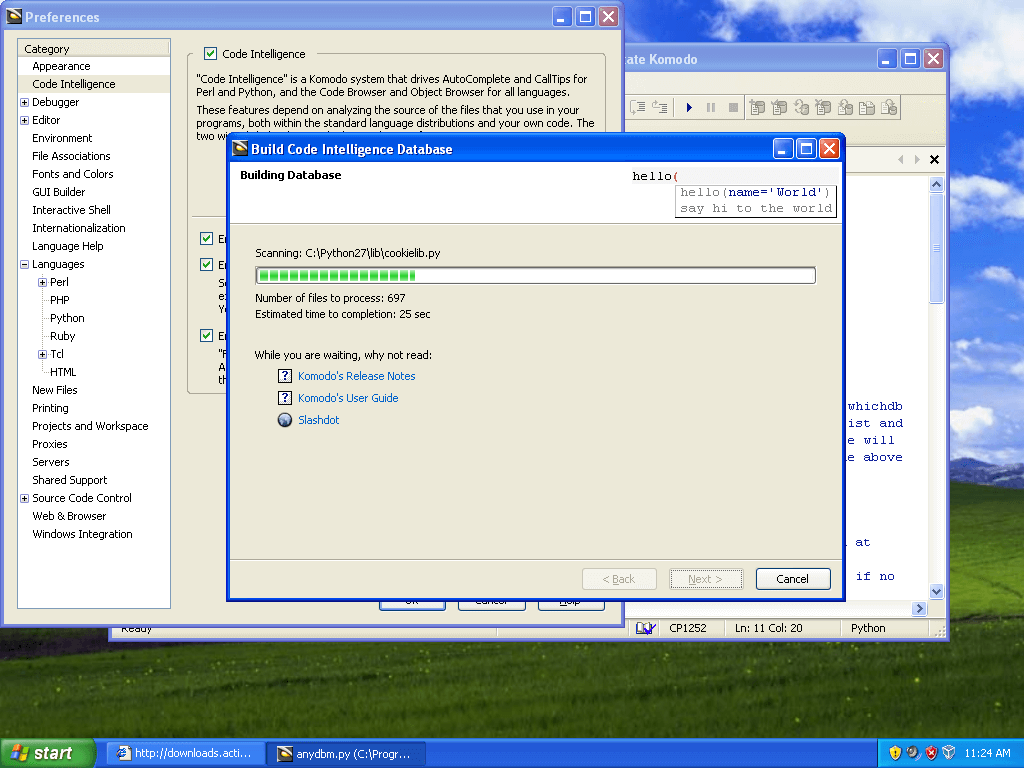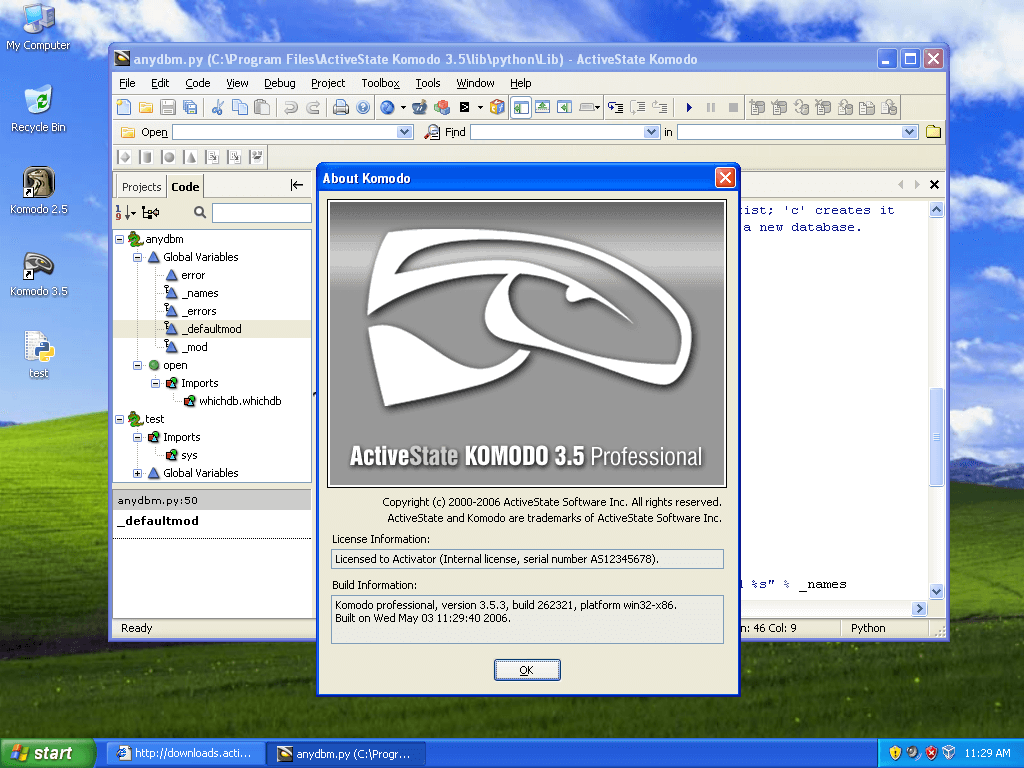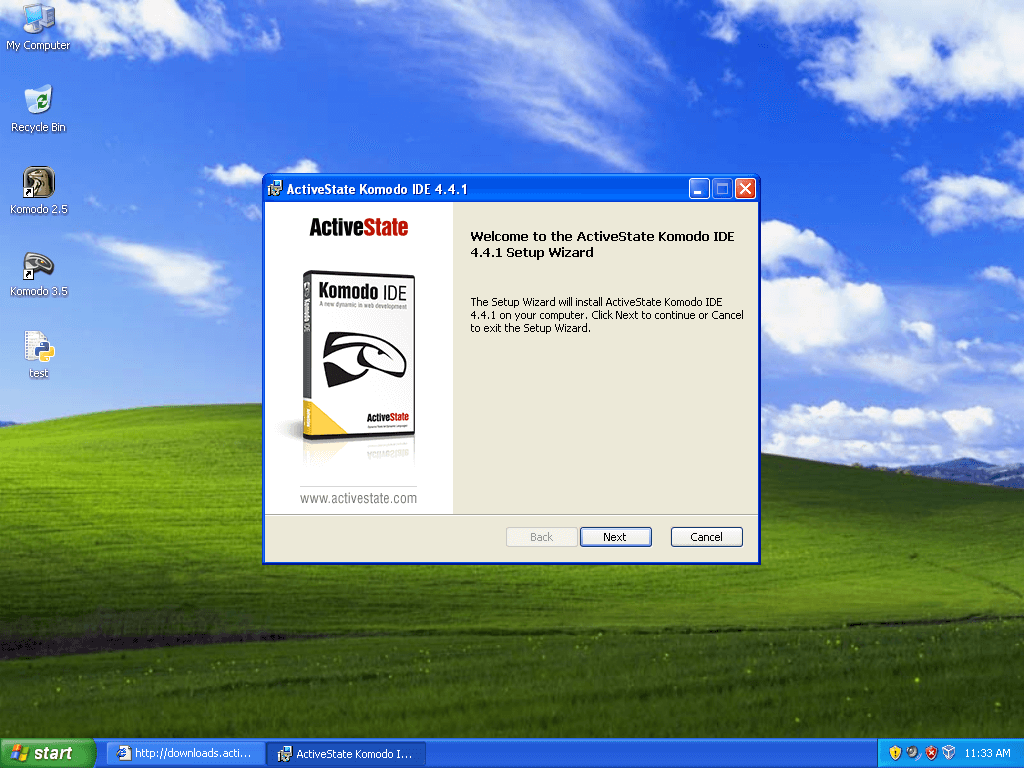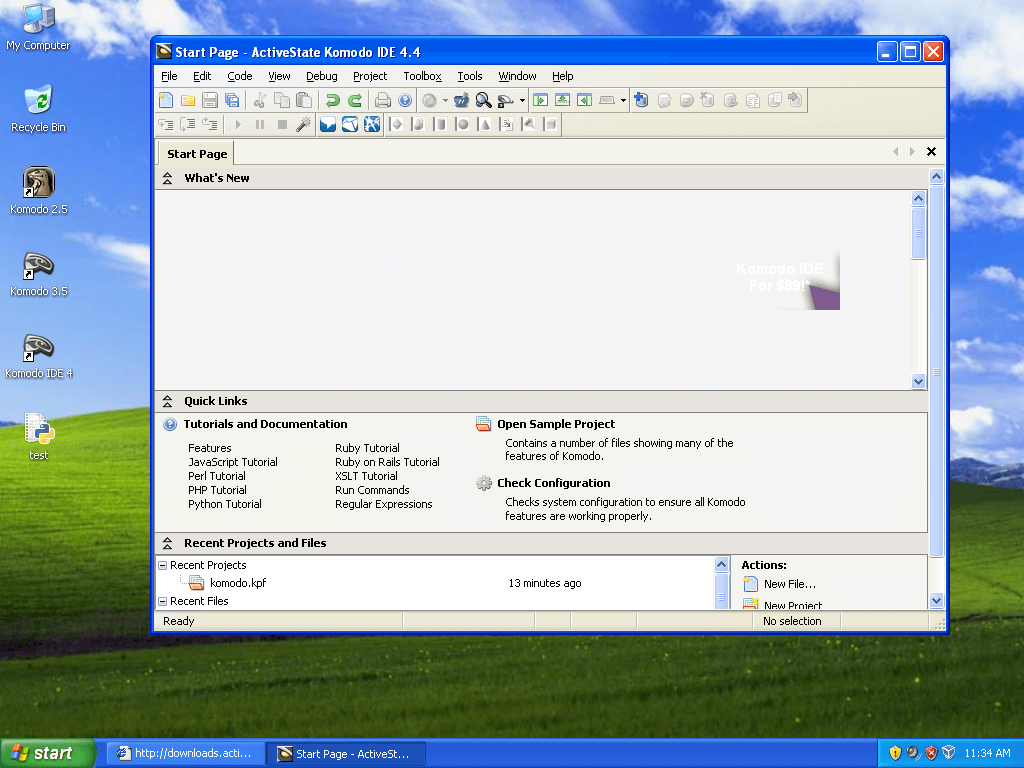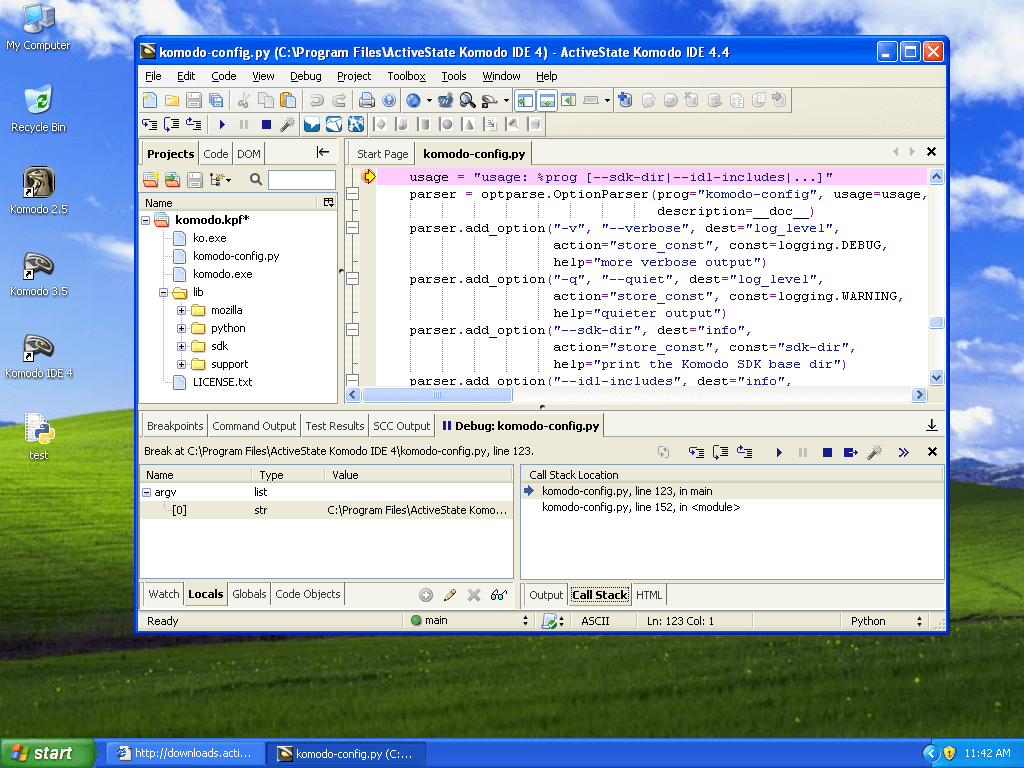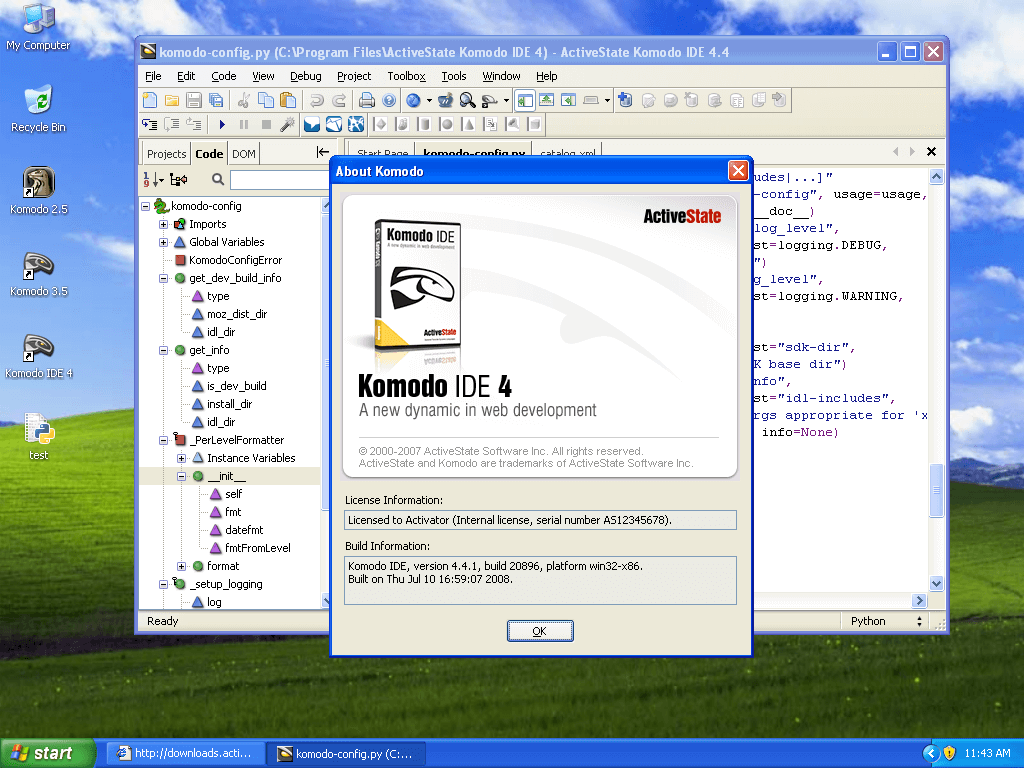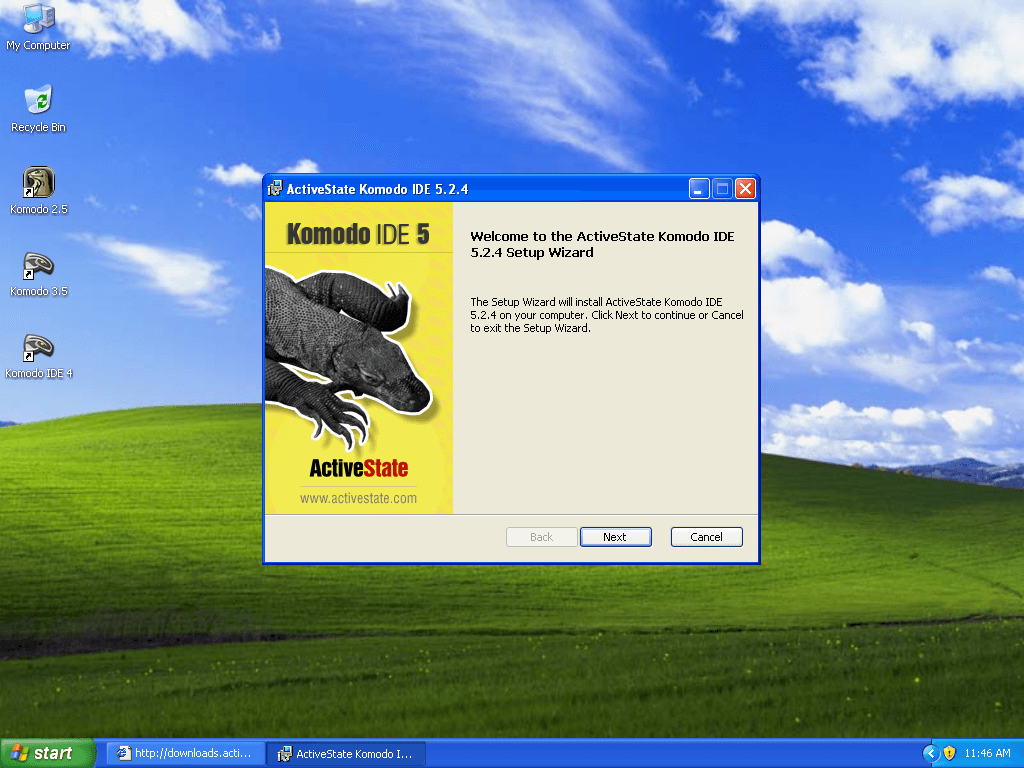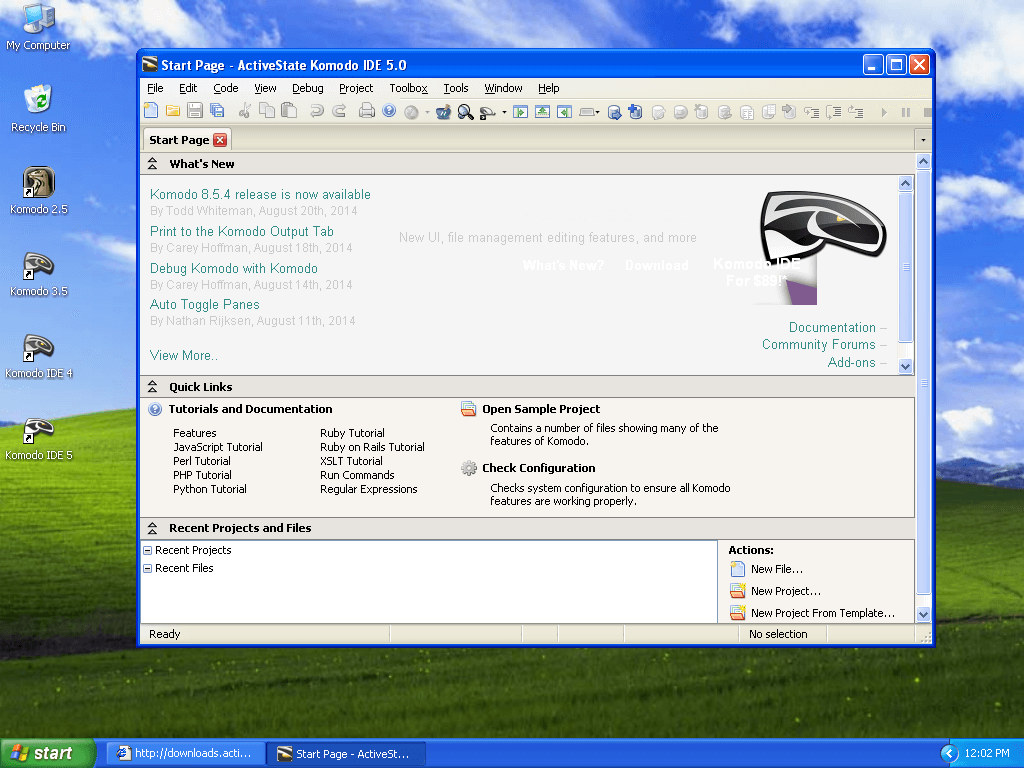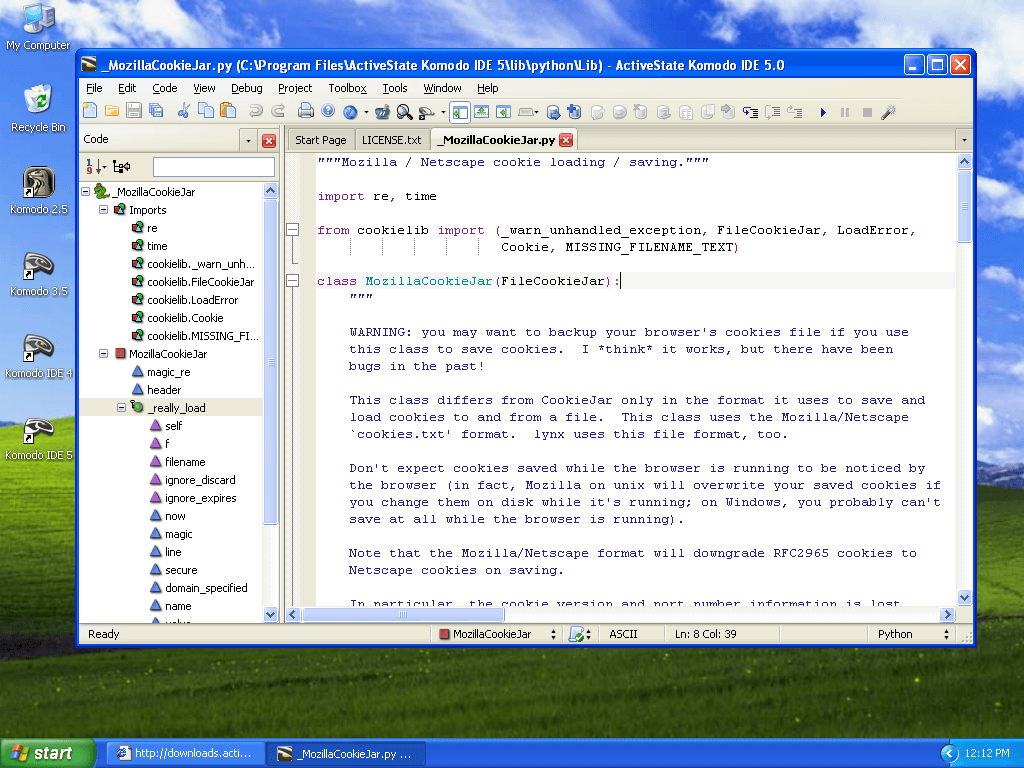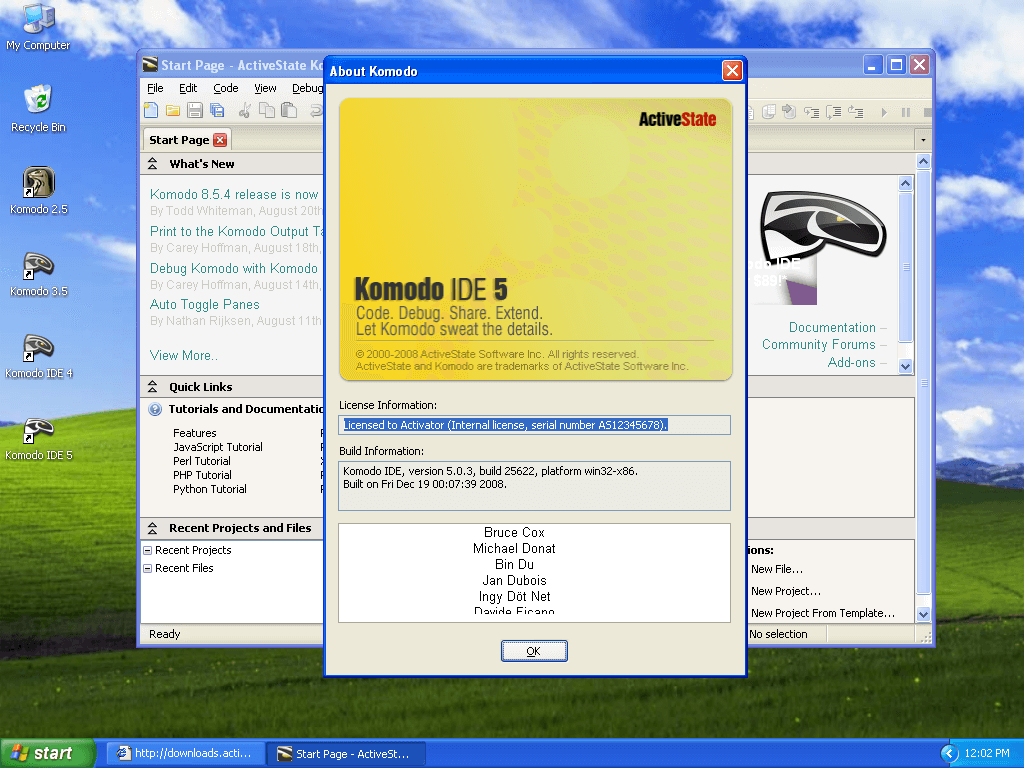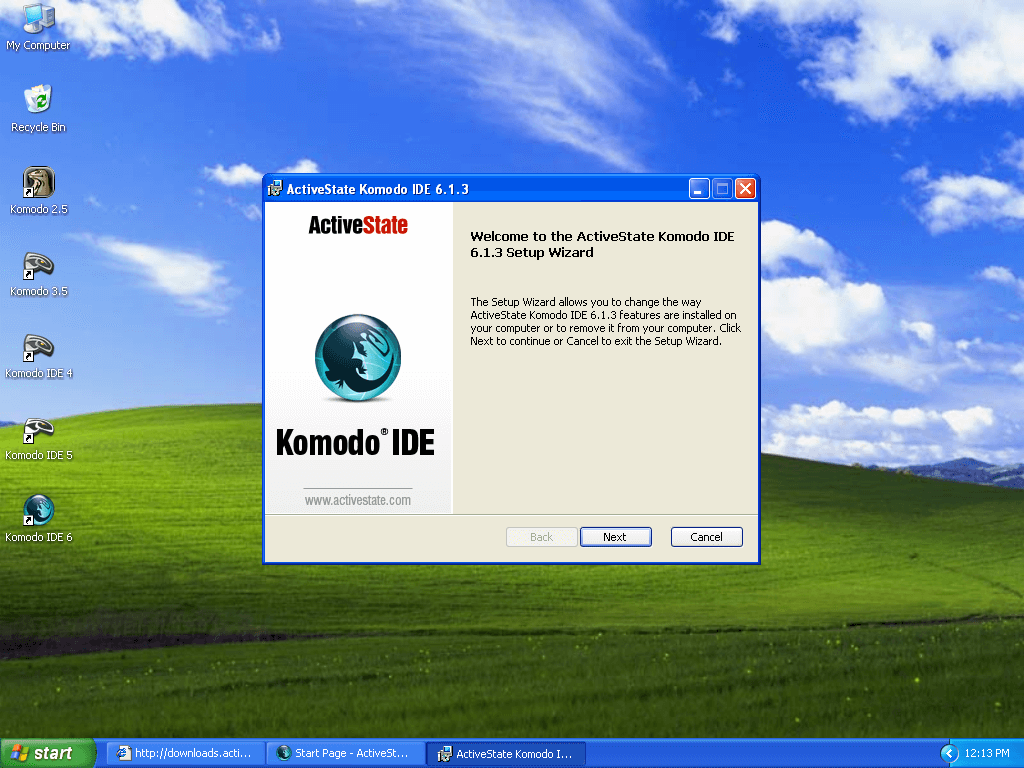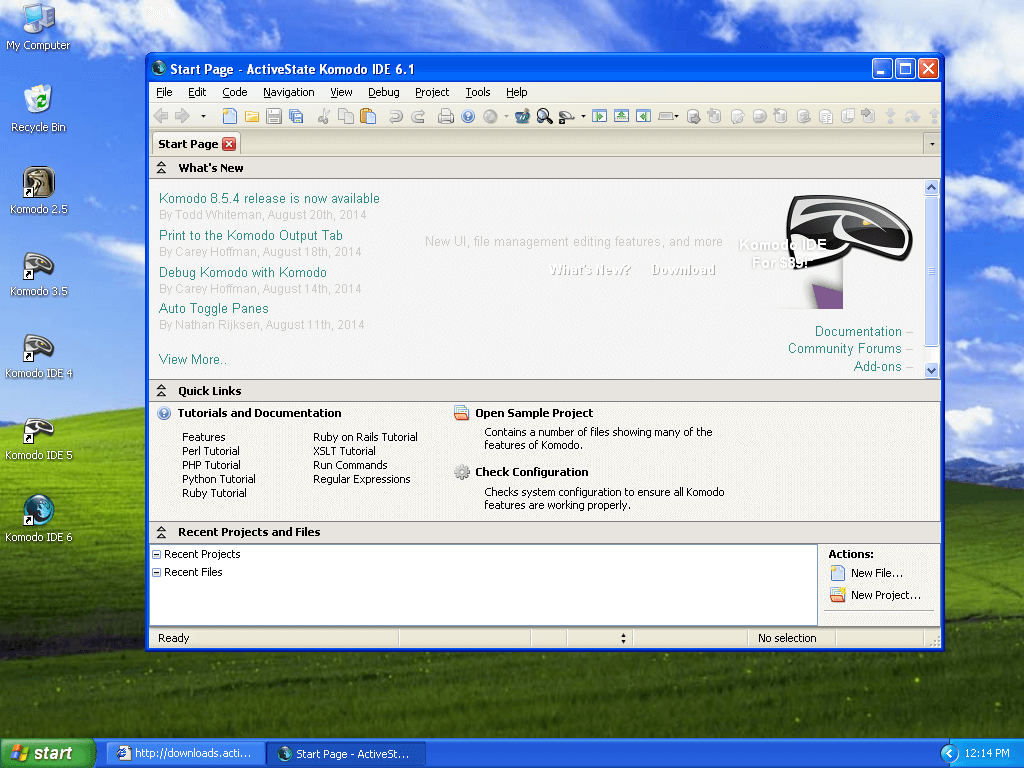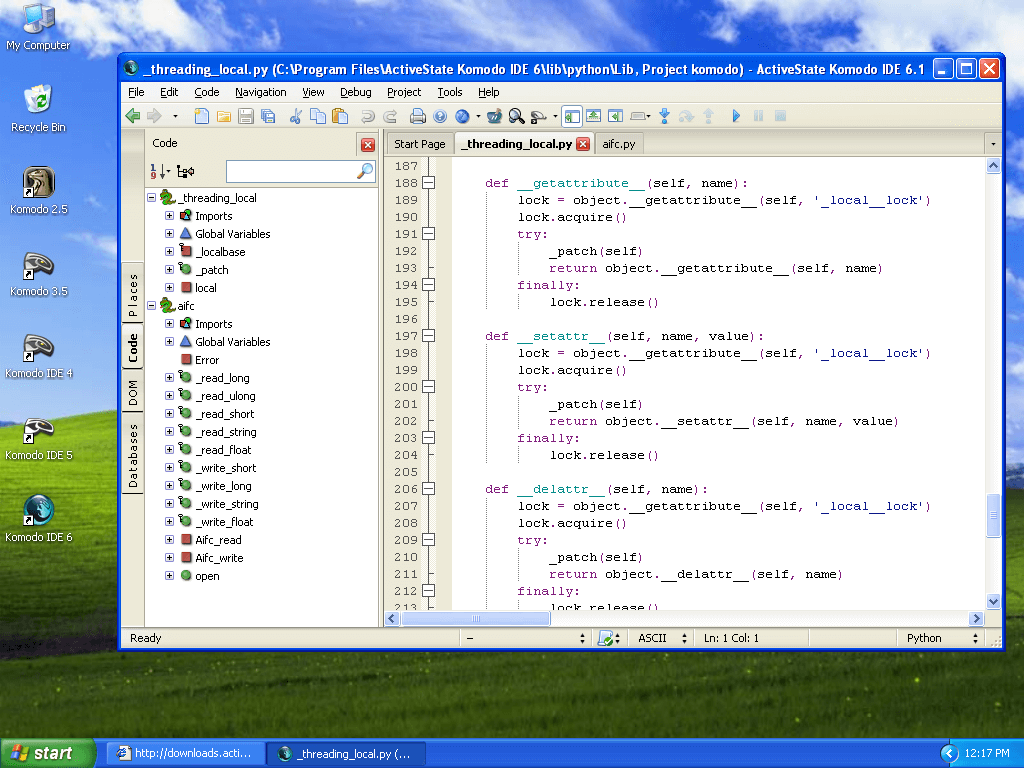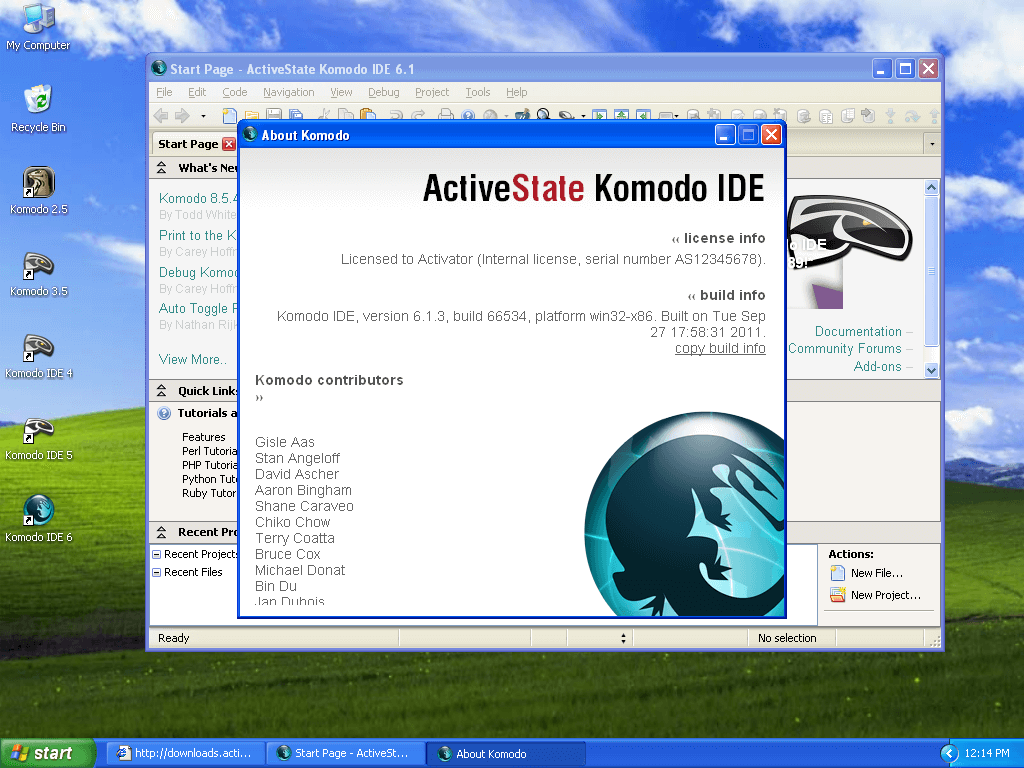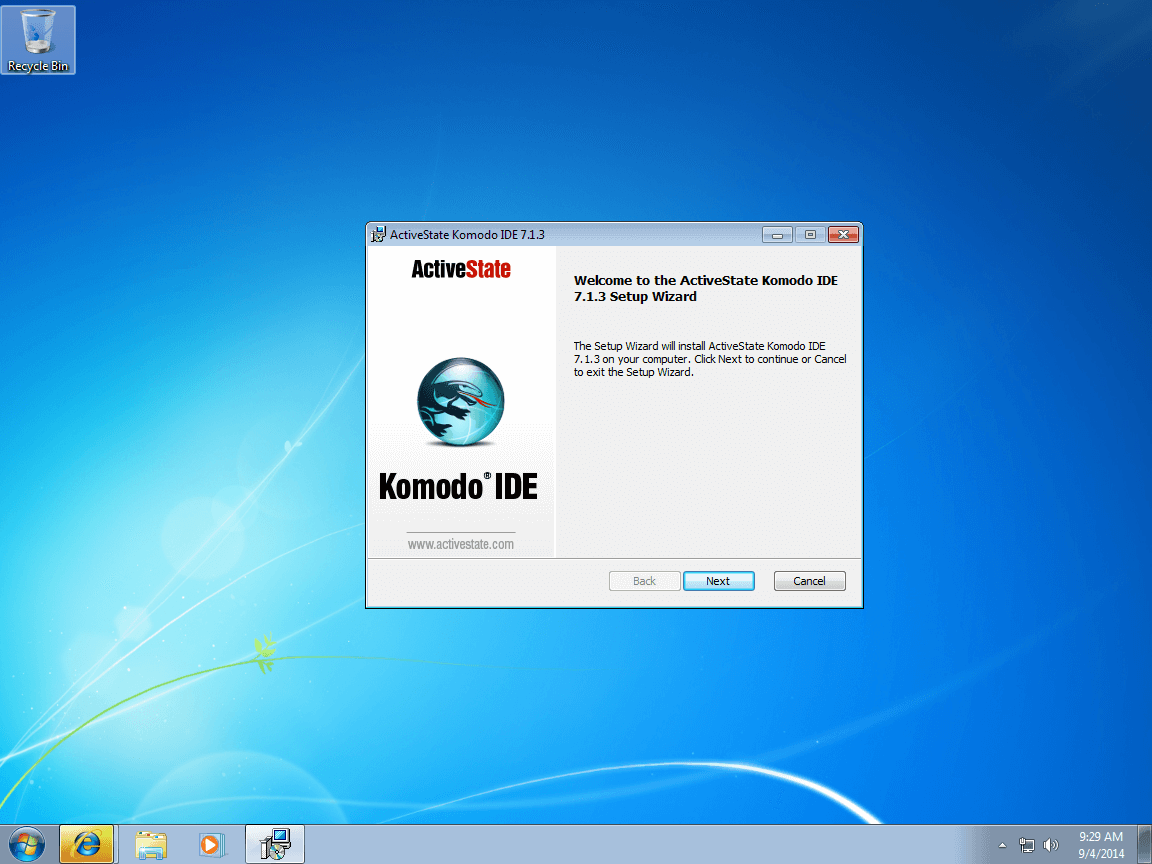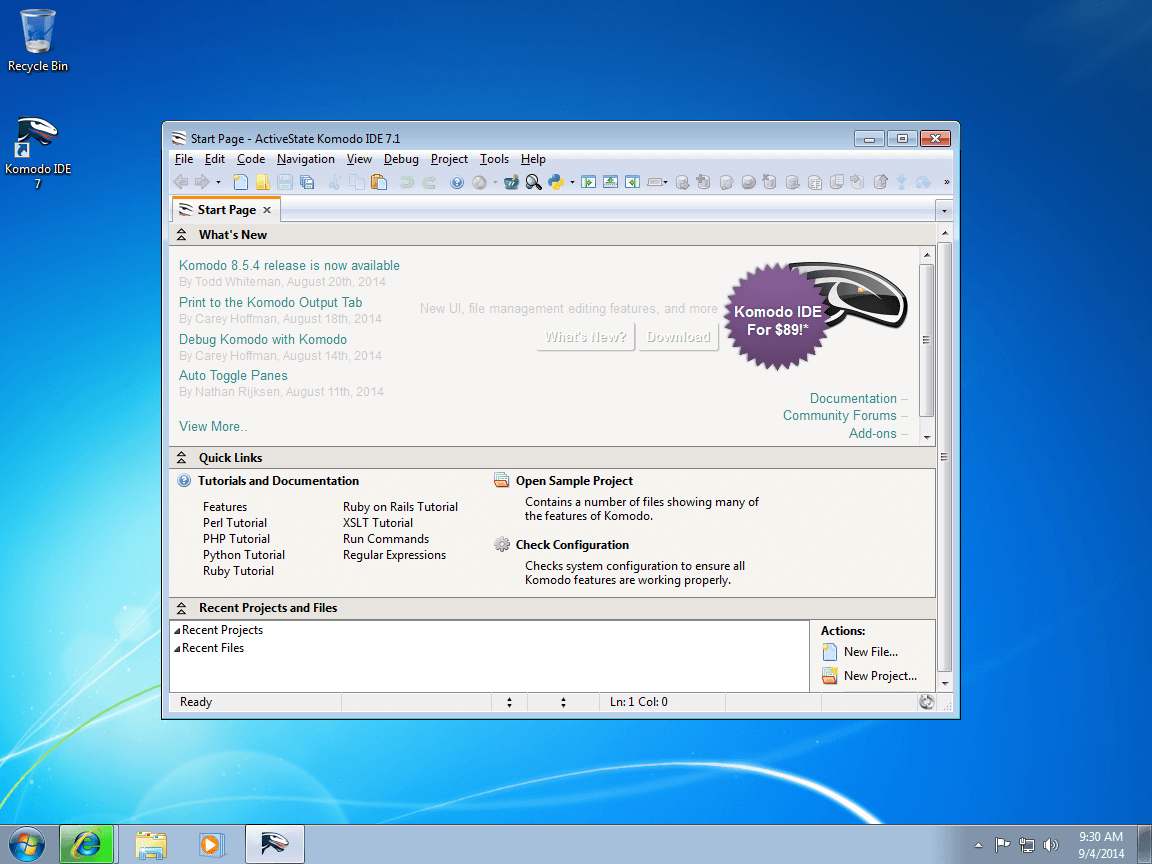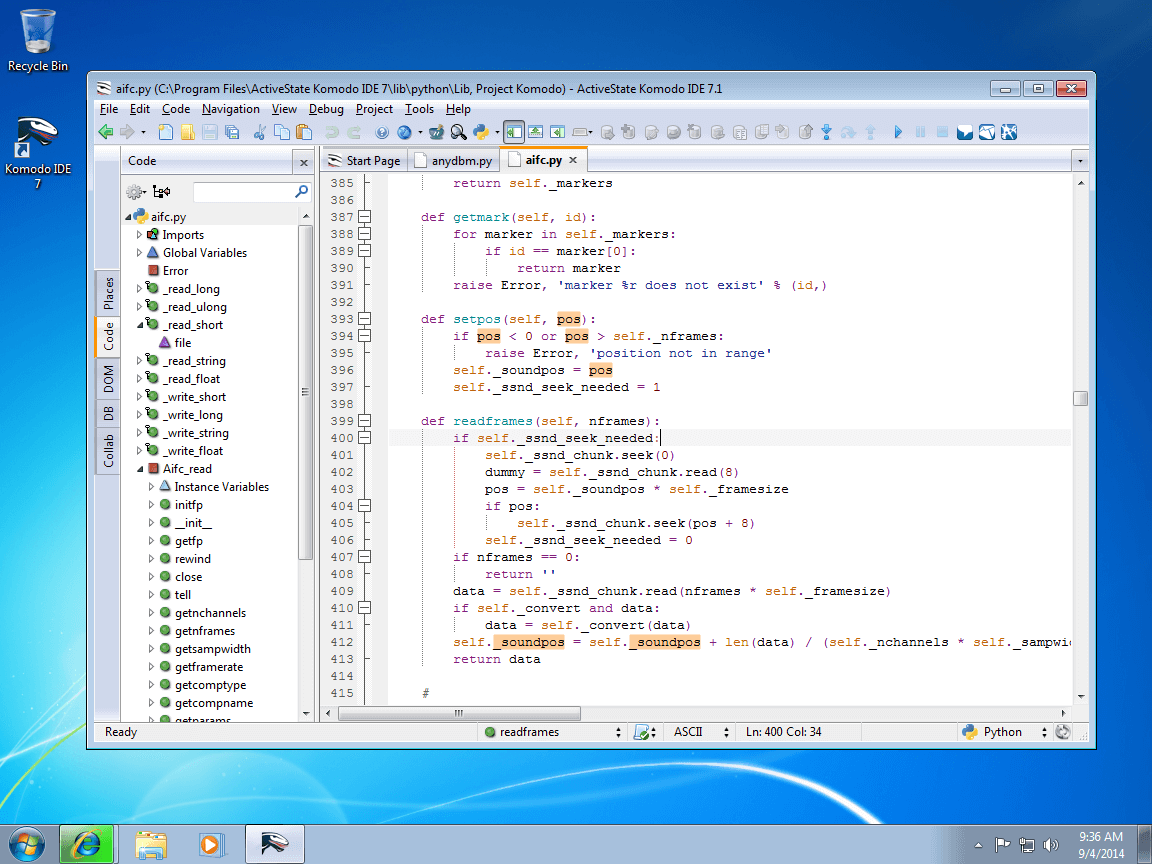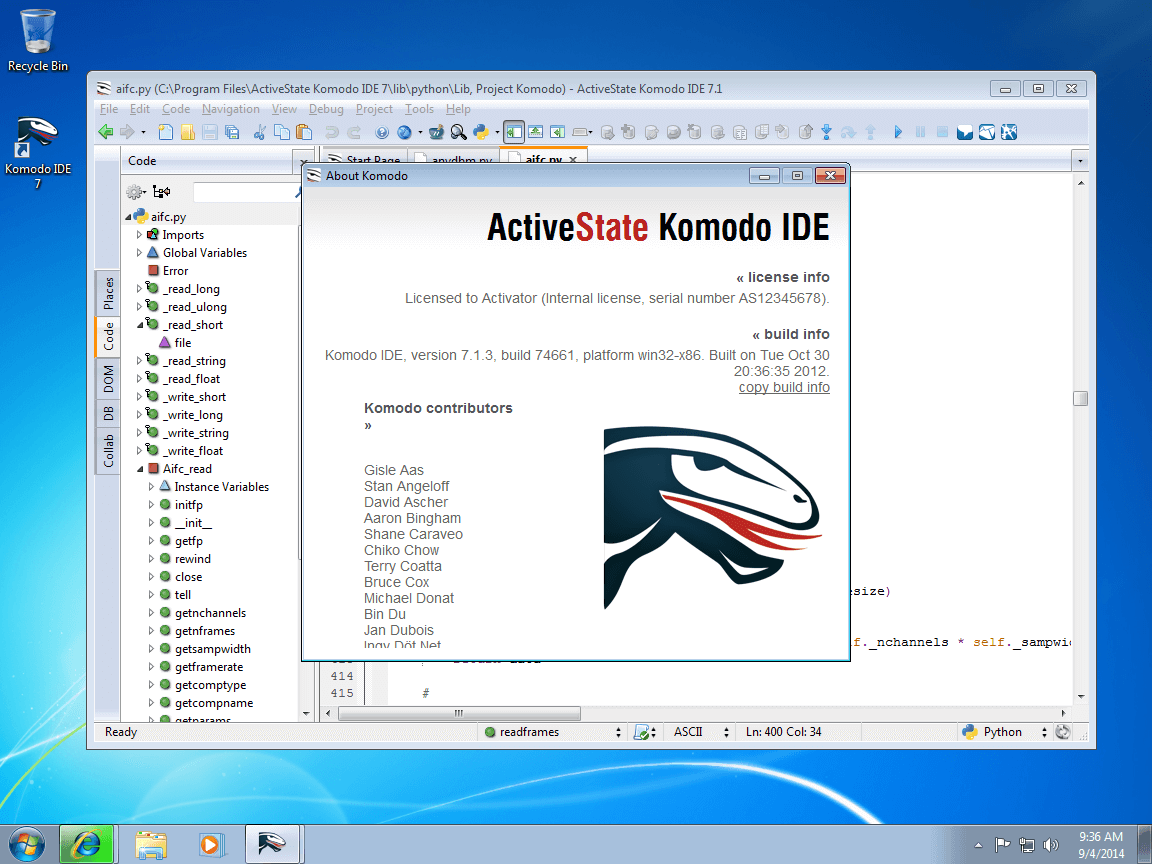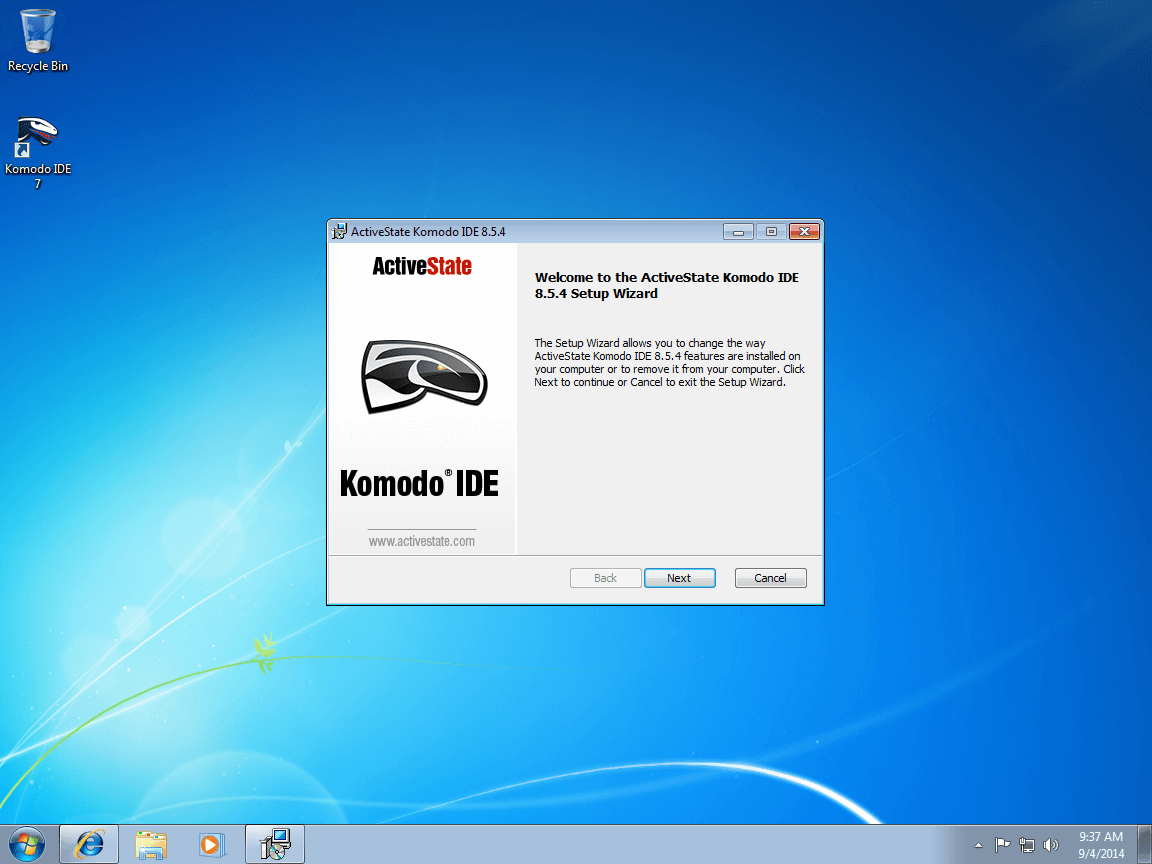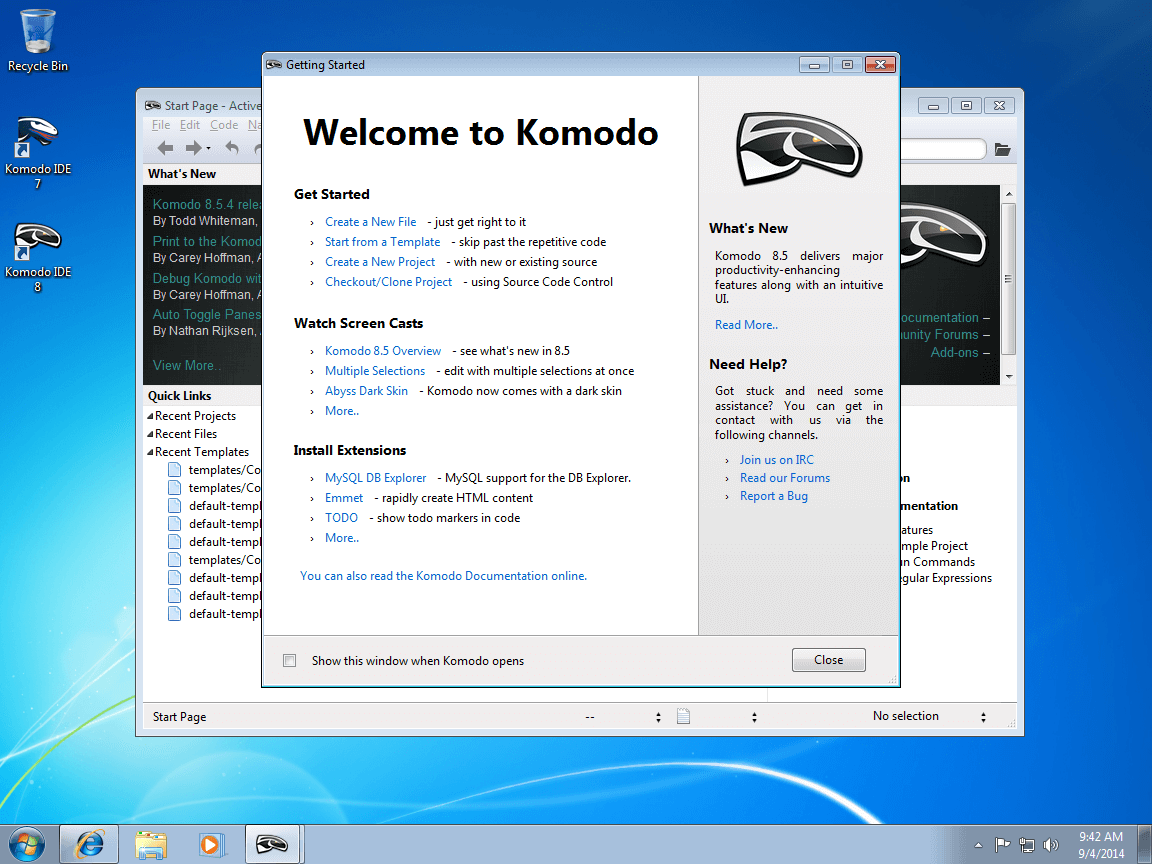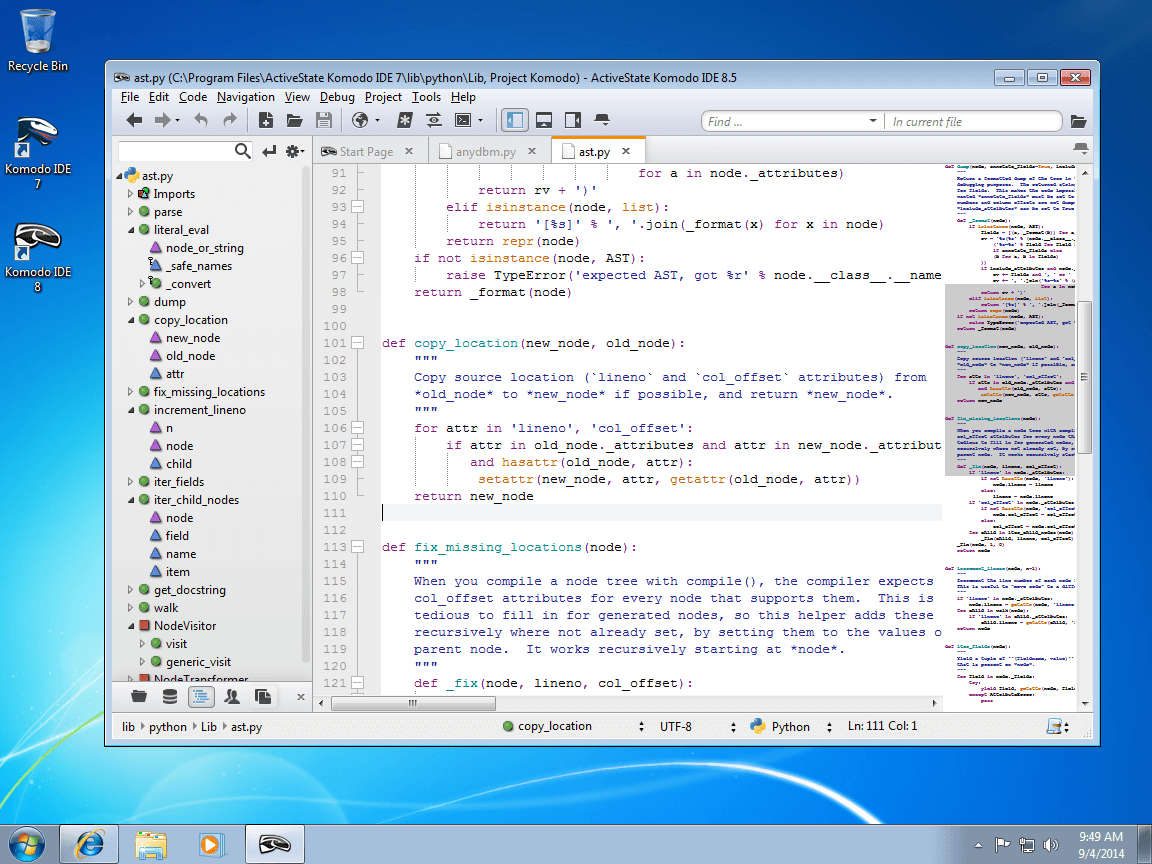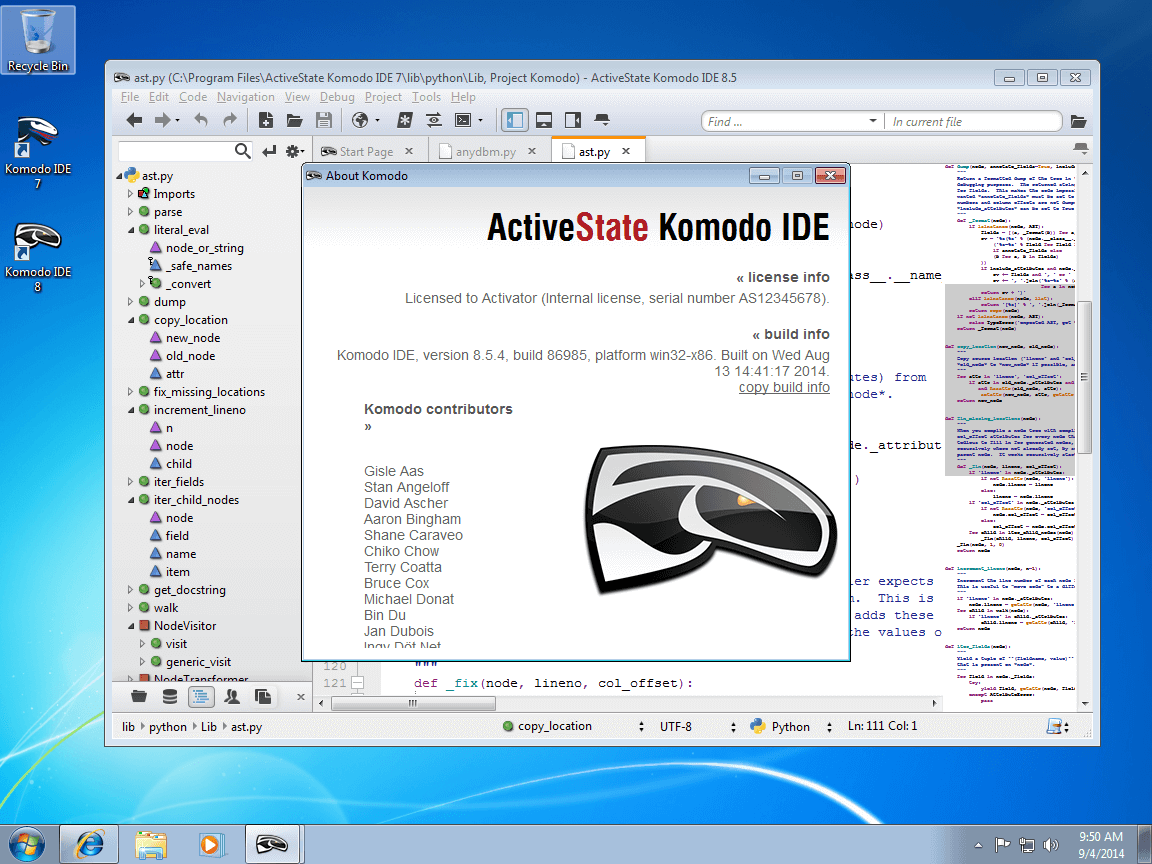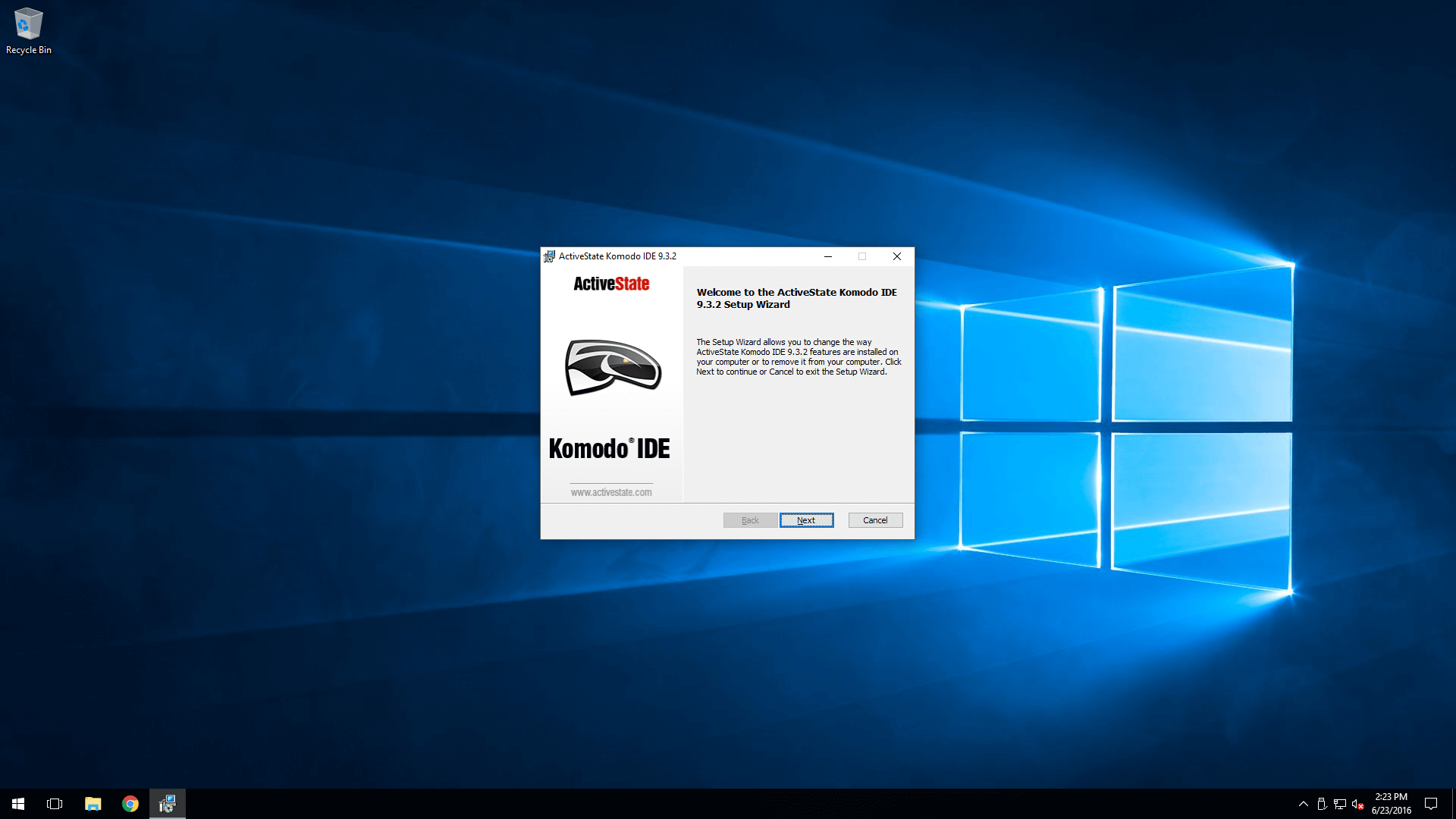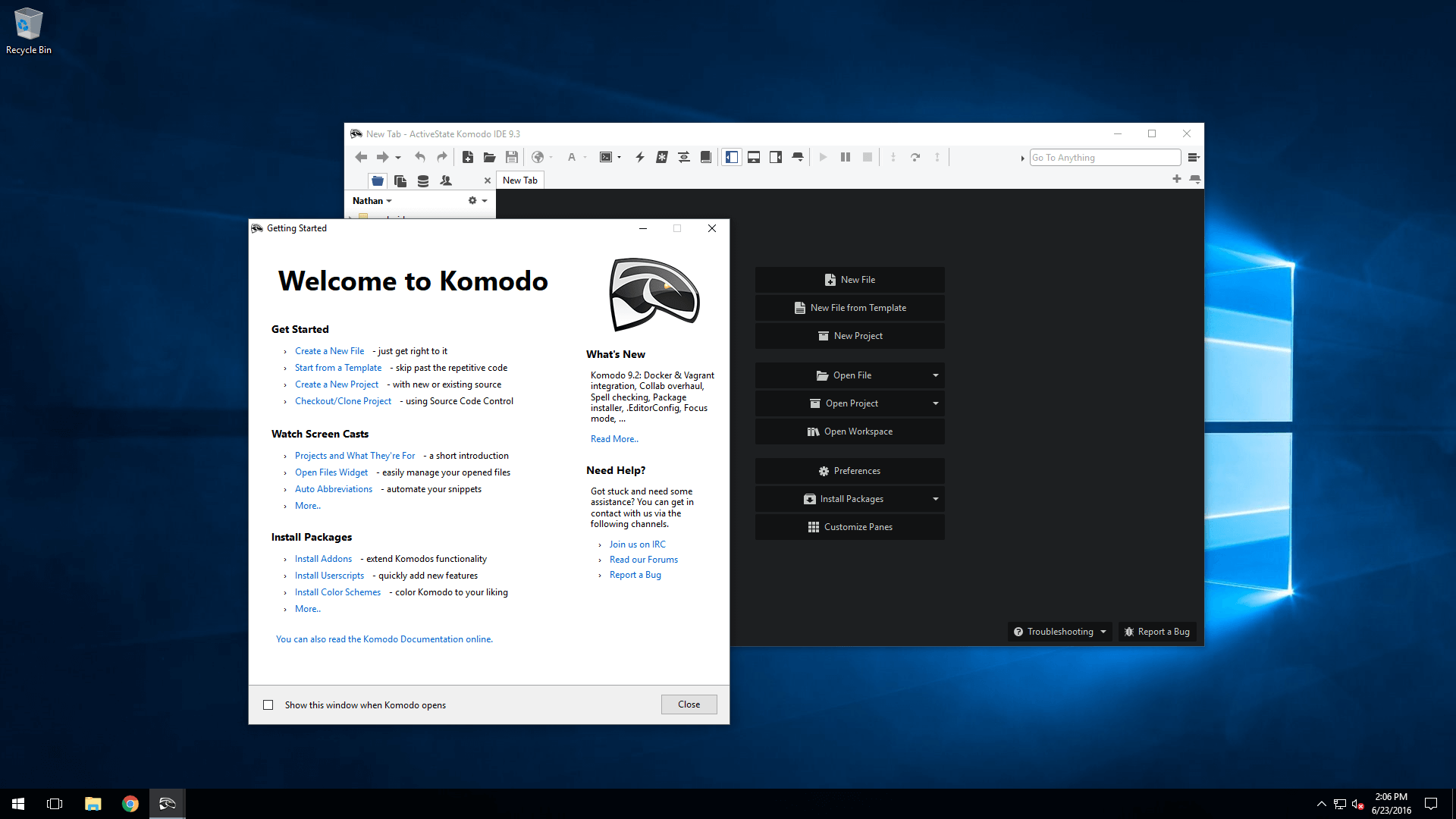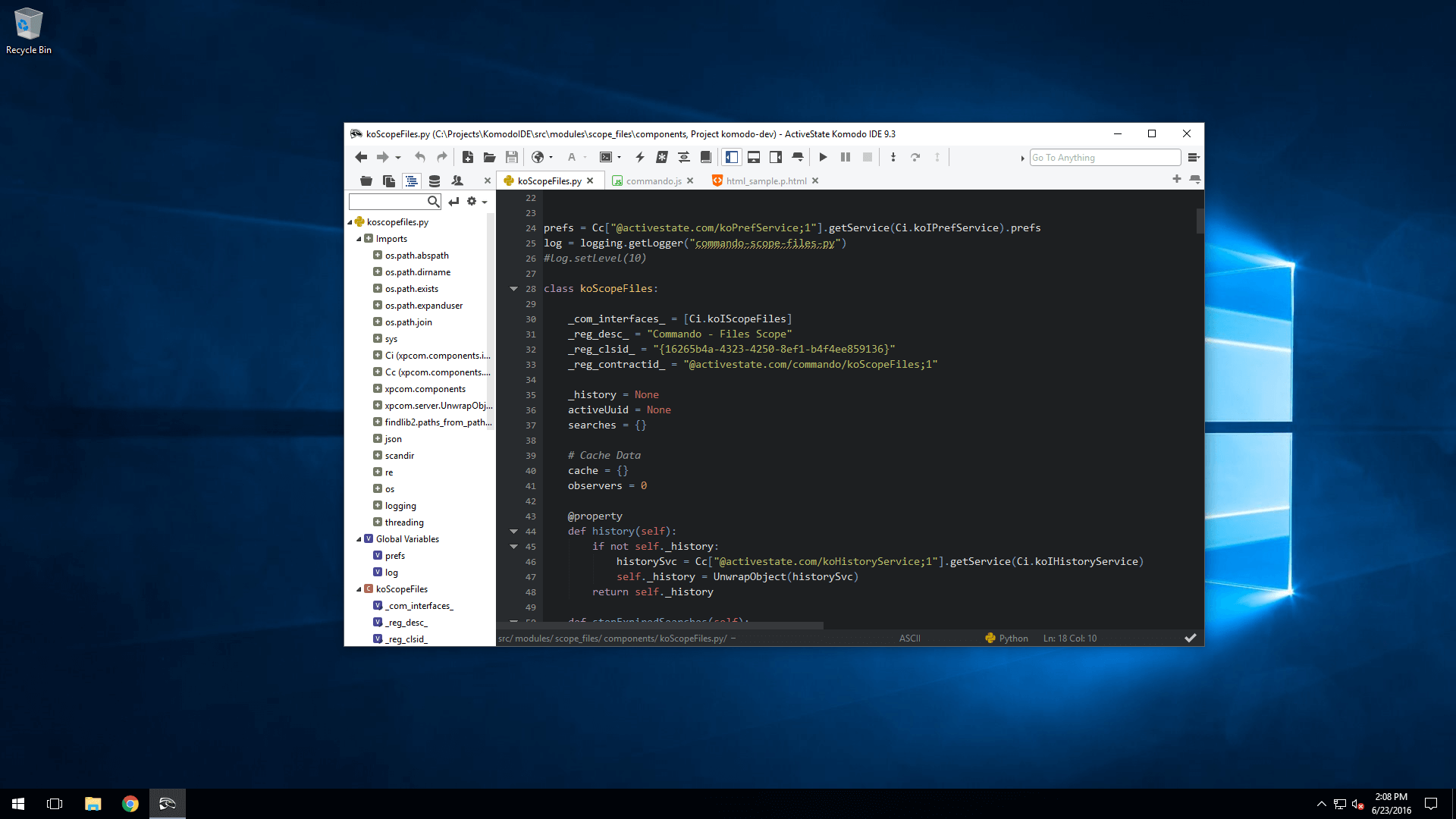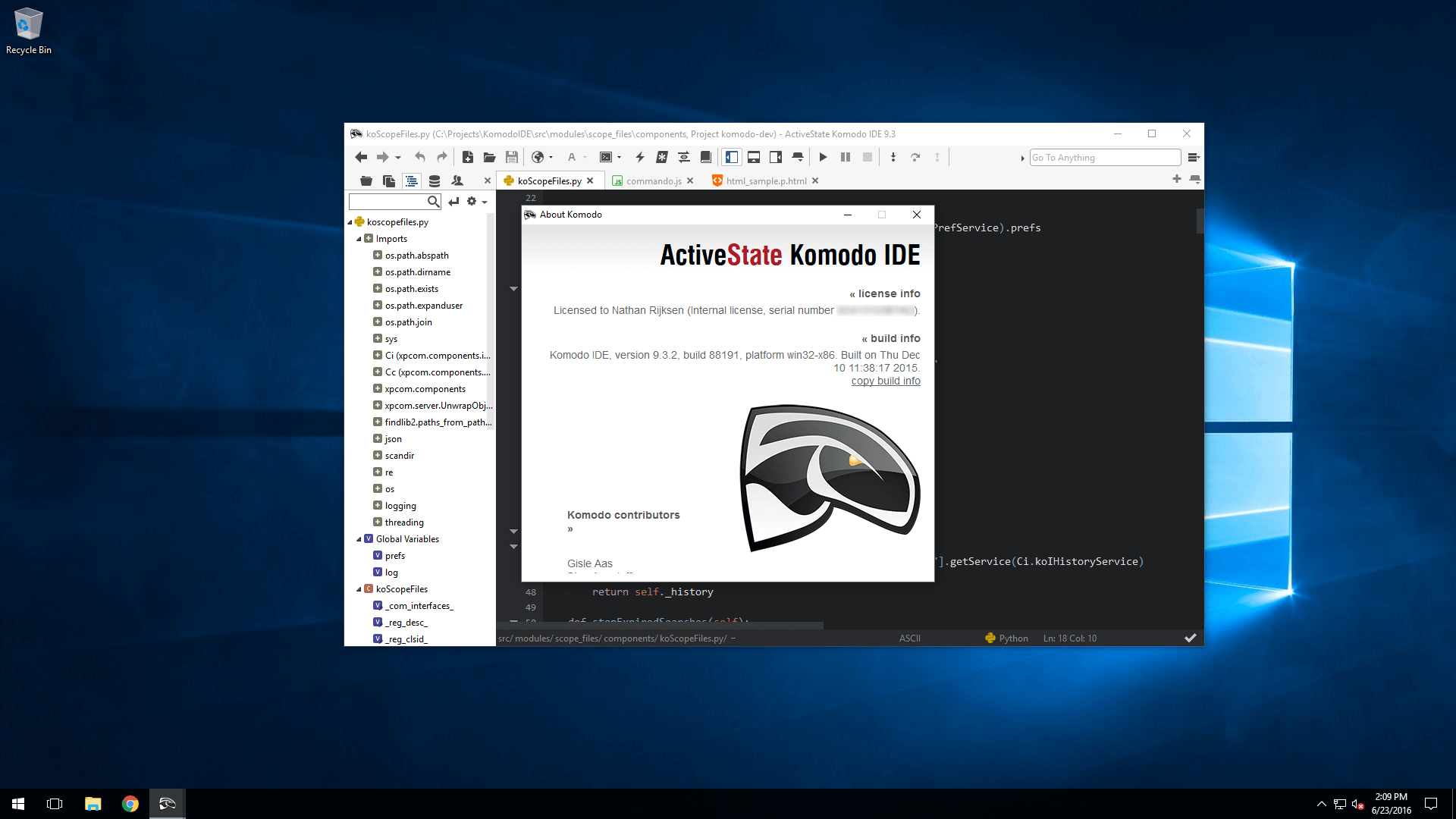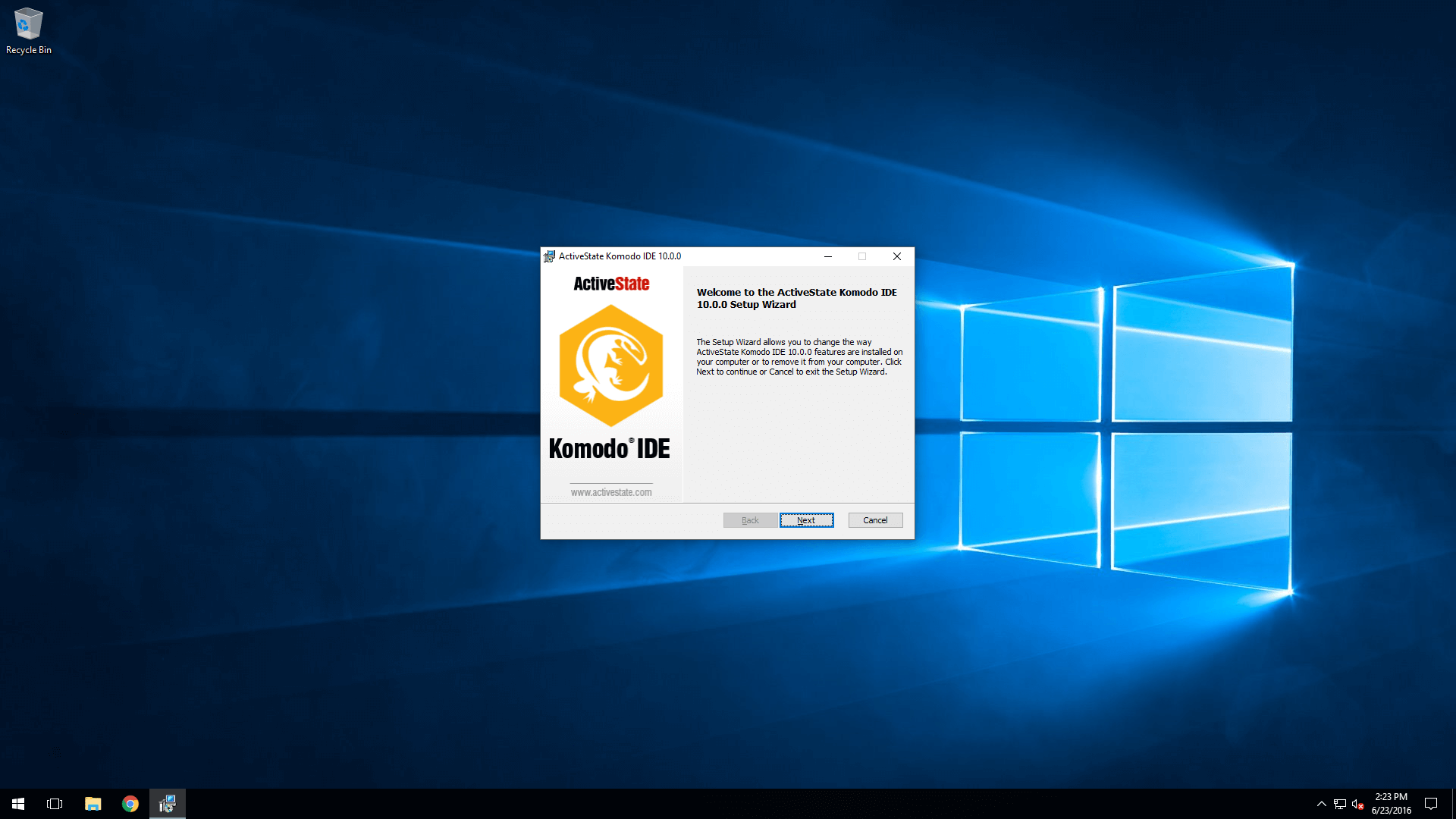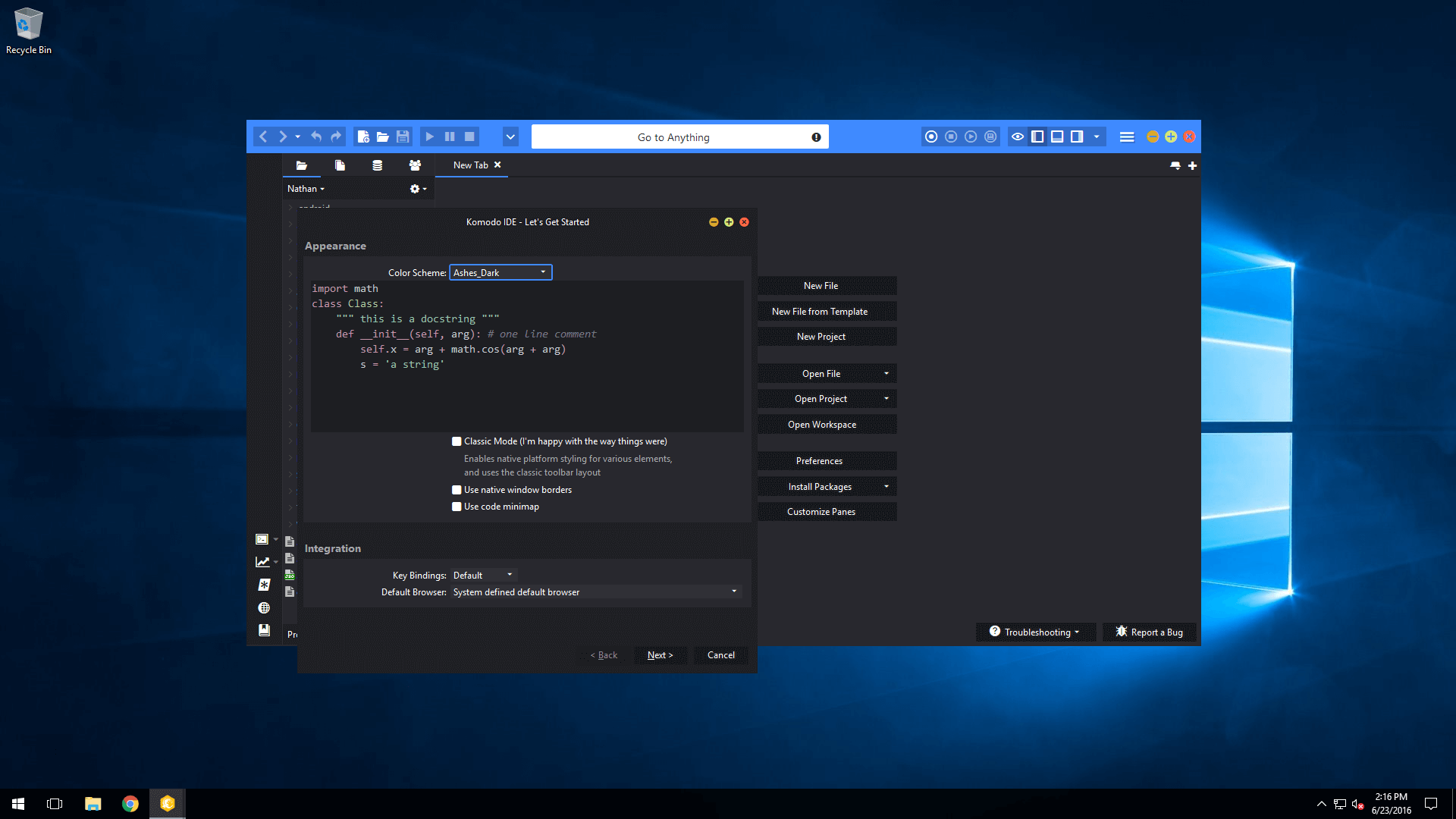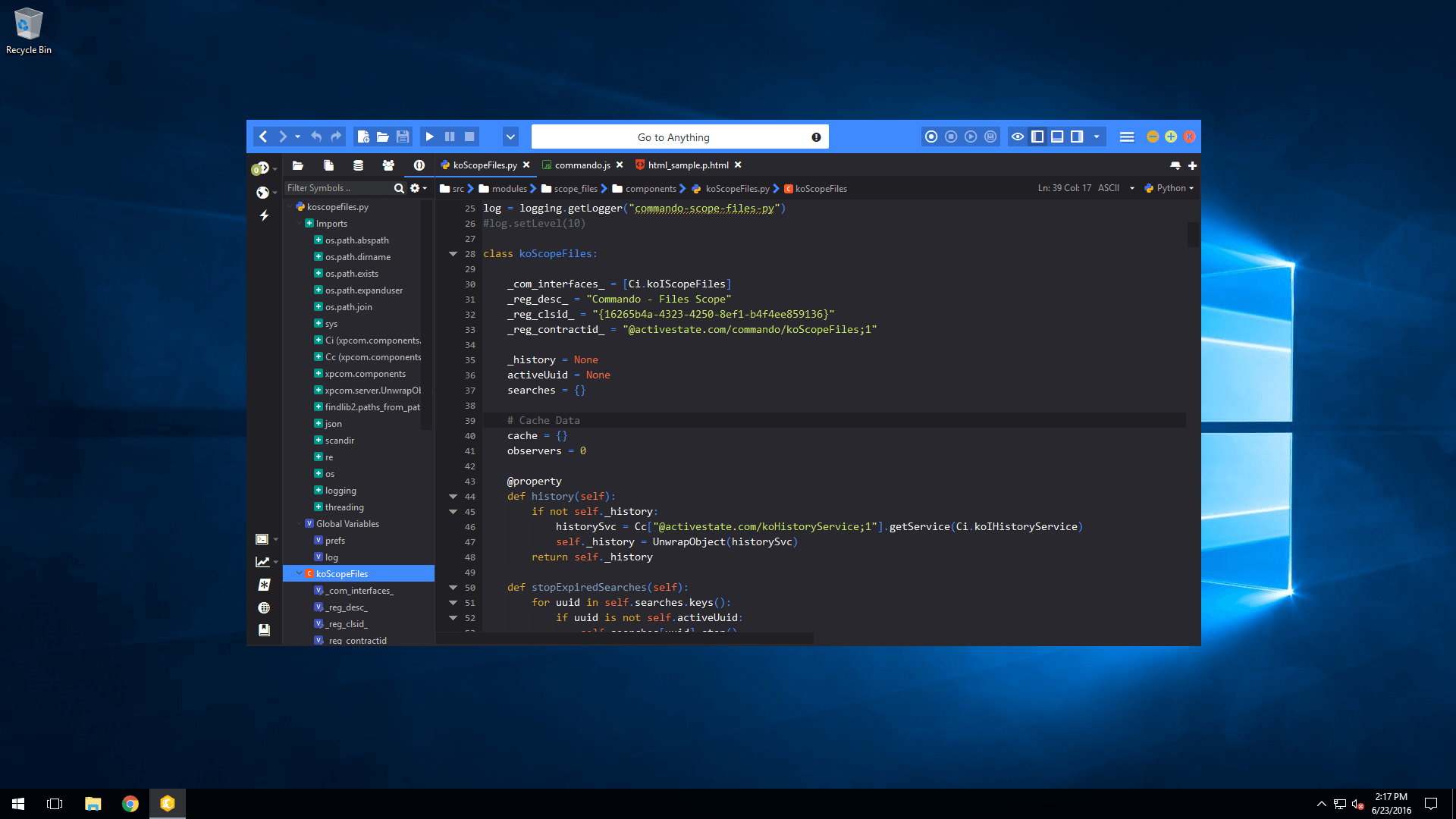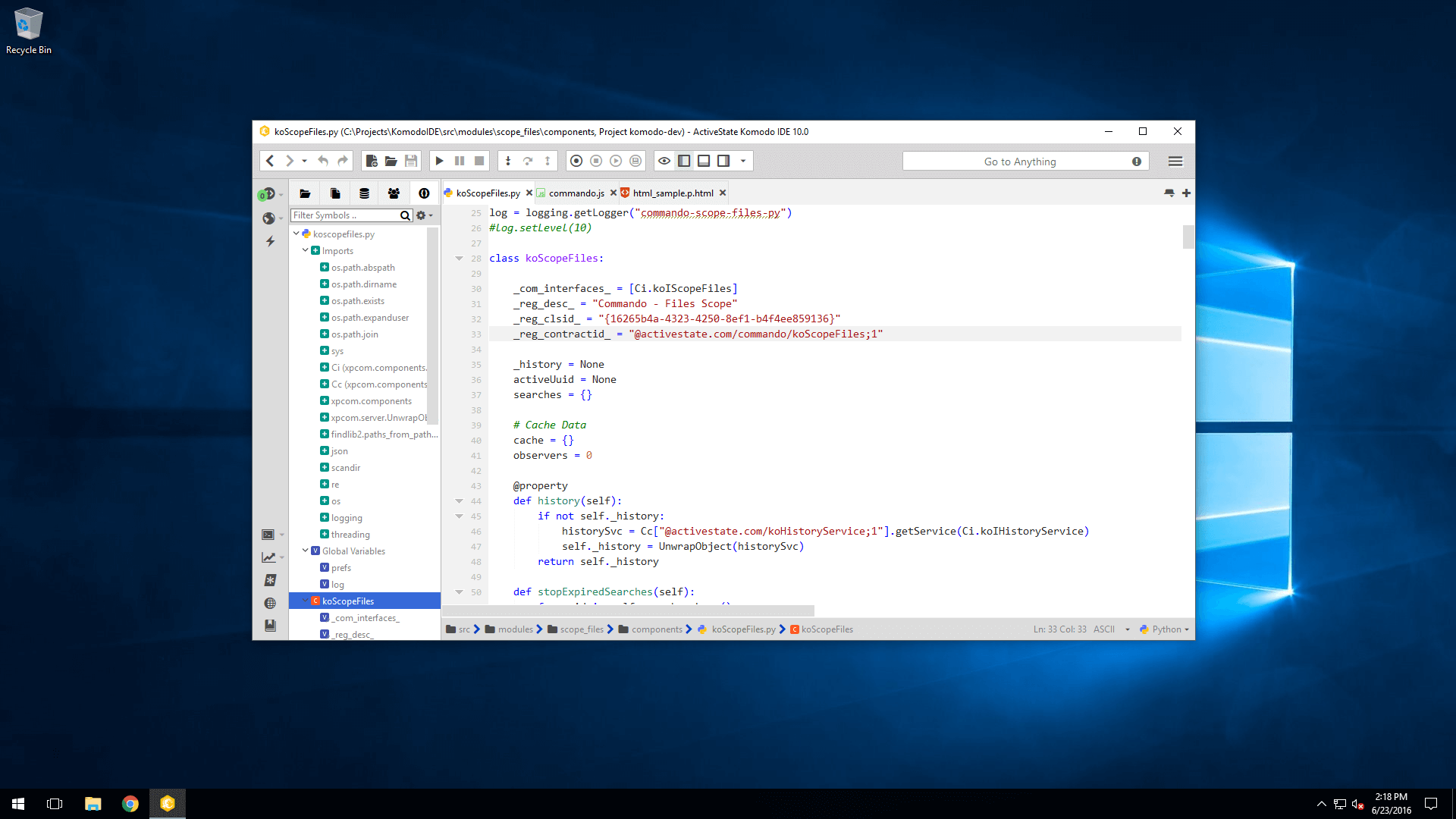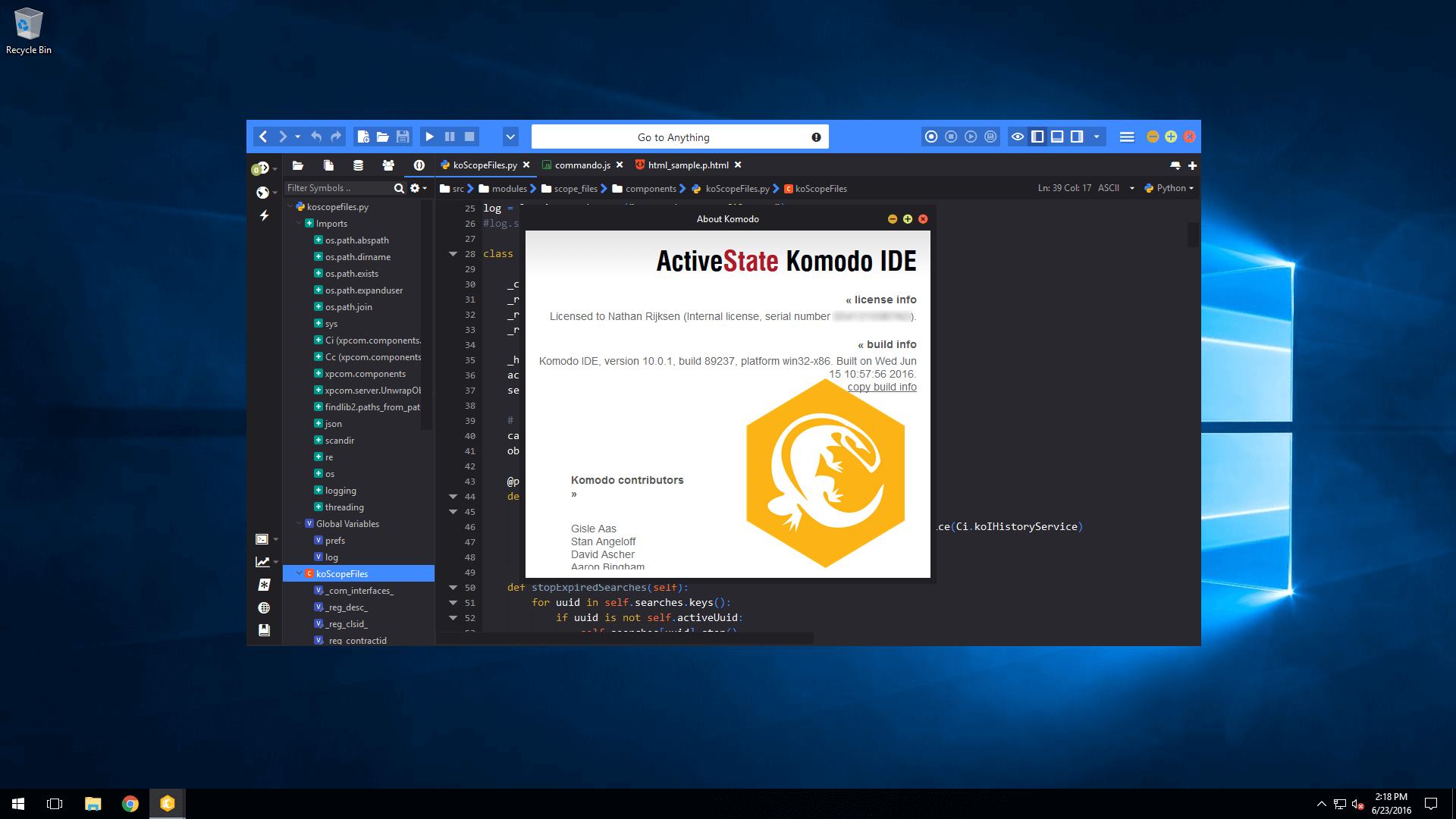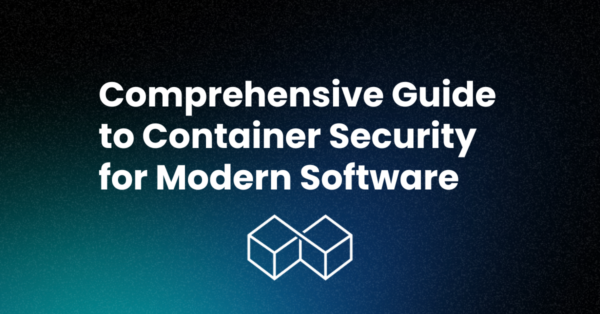This blog was originally published on September of 2014. It has since been updated to include the release of Komodo 9 and 10 and was subsequently republished.
The first version of Komodo was released roughly 16 years ago. This means Komodo is older than some of its users.. and yet its held up remarkably well thanks to our continuous work on Komodo.
With this blog we’ll take a look at where Komodo came from, where it is and where it is going.
- Version 0.x – 2000 to 2001
- Version 1.x – 2001 to 2002
- Version 2.x – 2002 to 2004
- Version 3.x – 2004 to 2007
- Version 4.x – 2007 to 2008
- Version 5.x – 2008 to 2010
- Version 6.x – 2010 to 2012
- Version 7.x – 2012 to 2013
- Version 8.x – 2013 to 2015
- Version 9.x – 2015 to 2016
- Version 10.x – 2016 to present
- 16 Years of Commits
- Looking Back
- Looking Forward
Version 0.x – 2000 to 2001
Komodo was first announced on May 24th 2000, but the first version was not released
until (approximately) Nov 9th 2000. Back then Firefox did not even exist yet,
Komodo was based on the Mozilla framework and browser which would later essentially
become Firefox.
The first version looked very bare bones, but that was normal for the software
of that time. What amazed me most about the first version was that it had an Open Files
widget (like we re-introduced in Komodo 8) but it had no file explorer. You
opened files by using your OS file browser or a file open dialog. The file
explorer wasn’t introduced until much later.
Some other interesting features in the first version of Komodo were:
- It came packaged with the Mozilla browser and ChatZilla (!!)
- You could “collapse” the menubar, but even collapsed it still took up about
as much space - There was no Preference window yet, you could only adjust your preferences
through the menubar. - It already came with Perl and Python debugging
- It installed to C:\Komodo
Back to Top
Version 1.x – 2001 to 2002
Version 1.x already looked significantly different from 0.x and no longer came
packaged with a browser or chat client. The UI reminded me a lot of earlier
versions of MS Word, not too unsurprising considering it’s essentially a text
editor of sorts.
Notable 1.x changes were
-
- LOTS of polish over the 0.x version
- Preferences introduced, already looks a lot like the Preferences dialog we have
today, though not as populated.
- Support for FTP servers
- Introduced the first version of the Rx tookit
Back to Top
Version 2.x – 2002 to 2004
Did you know Komodo had a GUI builder? No? Neither did I until I installed Komodo
2.x. Evidently Komodo used to support building GUI elements for Tk and Tkinter.
This wasn’t something slapped on either, the GUI builder was an incredibly
detailed and complete component. So much so that when ActiveState stopped
developing it for various reasons it was open sourced and the community took
charge of it, it was rebranded as SpecTcl and is still available on SourceForge
today.
Other notable 2.x changes included:
- Linux Version (Version 2.3)
- Solaris Version (!) (Version 2.5)
- Color Scheme Editor
- Introduced the Toolbox (macros, snippets, etc)
- Source Code Control
- GUI Builder
- Visual Package Manager
- HTML Previewing
Back to Top
Version 3.x – 2004 to 2007
Komodo 3 really started to look more and more like the Komodo we see today,
the UI and UX started to establish itself more clearly. With Komodo 3 we
introduced one of the most important features in Komodo today – CodeIntel.
This first version required manual input, where you would select which
languages CodeIntel should control on first startup, after which Komodo would
run through the first scan. This is all still being done but is mostly moved
into the background such that you aren’t needlessly bothered by it.
Notable 3.x changes included:
- OSX Version (Komodo 3.5)
- CodeIntel
- Interactive Shell (REPL)
- Code Browser
- Open / Find Toolbar
- Custom toolbars, menus and icons
Komodo was more and more becoming the full fledged IDE we know and love today,
but it was still missing a file explorer.
Back to Top
Version 4.x – 2007 to 2008
Finally, we have our File Explorer, or as we tend to call it; “Places”. Komodo 4
didn’t do much about its UI, it instead focussed entirely on functionality.
Notable changes were:
- Go to Definition
- API Catalogs
- DOM Viewer Widget
- Code Browser Widget
- Vi Emulation
- HTTP Inspector
- JS Debugging through a JavaScript DBGP browser extension
- SFTP and SCP Support
- SCC Changes List
As you can see whilst 4.x didn’t change much visually it added a boatload of
functionality.
Back to Top
Version 5.x – 2008 to 2010
Komodo 5 received its first major facelift since 2.x, and was made to look much
nicer on Windows XP.. though you were still stuck with those greens and blues, god
XP was ugly.
Notable changes included:
- “Modern” (relative) look
- Code Formatting
- Ability to launch multiple Komodo windows
- Editor history (navigate back and forth through your code)
- Editor Hyperlinking (Ctrl+click)
- Go to File (Fast Open)
- Search Highlighting
- CSS color popup
Back to Top
Version 6.x – 2010 to 2012
Version 6 polished the new UI introduced in 5.0 a bit, but also introduced
the vertical tabs in the sidebars. I’ve never been a big fan of those personally
but they were a distinctive part of Komodo for quite a while.
Notable changes included:
- File Browser Succeeded by “Places”
- Database Explorer
- File Publishing (upload to remote servers, eg. FTP)
- Workspaces
- Rewrites of several core components
Back to Top
Version 7.x – 2012 to 2013
Version 7.x made some slight UI changes, notably it integrated parts of the Aero Theme created by Stan Angeloff. It also introduced the ability for IDE users to
sync their preferences to the cloud, such that their preferences would remain the
same between multiple Komodo installs.
Other notable changes included:
- Variable Highlighting
- Language Extension – allows users to easily create their own language variations
- Komodo Profile Sync
- Code Collaboration
- Fast Find Widget
- Movable Widgets
- Customizable Toolbar
Back to Top
Version 8.x – 2013 to 2015
Komodo 8 was the first Komodo version I contributed to directly, my main objective
was to modernize the UI as I had always felt that Komodo needed a good looking
UI to match its powerful feature set. As a result Komodo 8 looks significantly
different from its earlier versions, introducing a completely new monochrome
iconset and skin. The skinning system was built using modern web technologies. Looking back at this release I realize however well intended this skinning system was, it was fundamentally flawed because it shifted the complexity of writing CSS rules to a very complex variable system. While you could modify the entire skin just by setting variables, there were so many variables that they became practically useless.
Other notable changes included:
- Minimap Scrollbar
- Customizable panes/widgets
- Code Refactoring
- Abyss Skin (dark skin)
- Breadcrumb Navigation
- Open Files widget
- Multiple Cursor Editing
- Unified Menu Button
- Custom Skins and Icons
Back to Top
Version 9.x – 2015 to 2016
Komodo 9 spanned essentially 4 releases. We released a Komodo 9, 9.1, 9.2 and 9.3, all of which including significant new features. We were quite ballsy with this release, making some changes that were very polarizing with our community; some LOVED it, others HATED it. We’ve learned a lot from these releases. Particularly that it’s ok to try new things, but to be more mindful of our loyal users (be more iterative with our changes). While the general UI changes in Komodo 9 were iterative and not very polarizing on their own, we also made UX changes like moving the find dialog into an embedded frame, and allowing for ulimited find results. This is also the release where we introduced the notification popups, which while well intended ended up failing for many reasons, primarily technical issues. Many of the negative concerns raised by 9 have been addressed in subsequent releases, but mainly by Komodo X.
This was also the release that introduced Commando (Go to Anything), which is a major component of Komodo today which facilitates many incredibly useful features.
Some of the major features that were released in Komodo 9:
- Go language support
- Track Changes
- Commando was Introduced
- Markdown Viewer
- Notifications
- Package manager integration
- Workspace management
- Docker/Vagrant integration
- Spell checking
- Focus Mode
- Documentation Browser
- Quick Bookmarks
- In-line code runner
Back to Top
Version 10.x – 2016 to present
Komodo 10 (Komodo X) was a BIG release. It came with a completely redone UI, which we kind of expected to be very polarizing, but luckily the vast majority of you LOVED it. The UI change wasn’t just because we wanted something new, in fact that was the least of our concern in choosing to “redo” large parts of the UI. The reason for the UI change can be summarized in 2 keywords: maintainability and UX.
First – maintainability: a problem with our old UI design was that it was very platform specific. Which while giving a very native looking UI on each platform made it very hard to maintain. Any UI change would need to be thoroughly tested on each platform and would likely need platform specific code to back it. This made for a lot of time spend on platform specific code that could have been spend on the features themselves or bug fixes / stability.
Second – UX: Komodo had gotten really bogged down with confusing UX over the years, which mainly came to be from developers designing the UI/UX (ie: backend devs doing frontend work). This makes for bad UI and UX and it’s something that we’ve wanted to address for a while. Komodo X paves the way to a very consistant and easy to understand UX. Many parts of the UX had been completely redone or improved.
Aside from a new UI we gave Komodo X a primary focus on web developer. Because of all the languages we support the one consistency between them is that almost all of the developers using Komodo use web technologies, and we wanted to add features that every developer would benefit from.
Some of the most notable Komodo 10 features:
- New UI and UX
- First start wizard
- New default keybindings
- Chrome remote debugging
- Ruby 2.1+ Debugging
- Gulp, Grunt integration
- Phonegap, Cordova integration
- Symbol Browser
- Improved CodeIntel
- VCS Overhaul
- Significant performance improvements
16 Years of Commits
16 years of commits spanning 3 version control systems (perforce, svn and git) and more committers than I care to count.
Looking Back
I’ve used Komodo for a long time, though I honestly cannot recall what year or version I started with.. it must have been version 4.x or 5.x. It’s funny looking back through our changelogs and seeing so many vital features being introduced since the time I started using Komodo; it makes me wonder how on earth I was able to use Komodo without feature X and Y. But then again, like many programmers I started out in Notepad (I kid you not) so it’s all relative.
As you may have been able to tell I looked at the history of Komodo mainly from UI and UX perspective, I did not spend a lot of time with individual features. If you would like to play around with earlier versions of Komodo yourself you can easily do so by visiting our Download Archive.
Looking Forward
For all the changes Komodo has gone through it is sometimes surprising we still have stuff to work on; but we do – for all the changes you see on these pages we have a thousand more in our minds. Future releases will showcase some of the brightest of those ideas. We’ve got plenty more for another 14 years, and then some.


